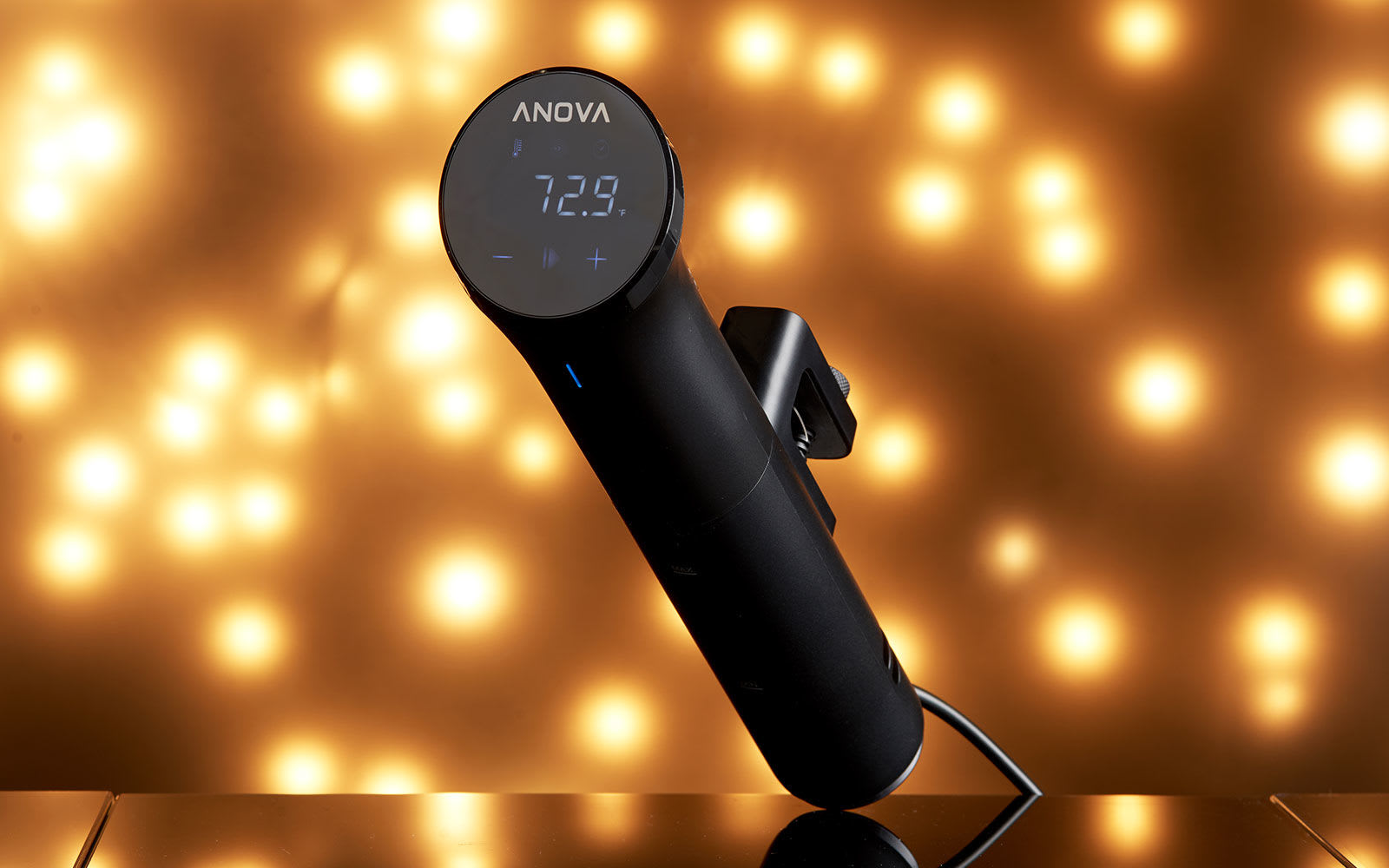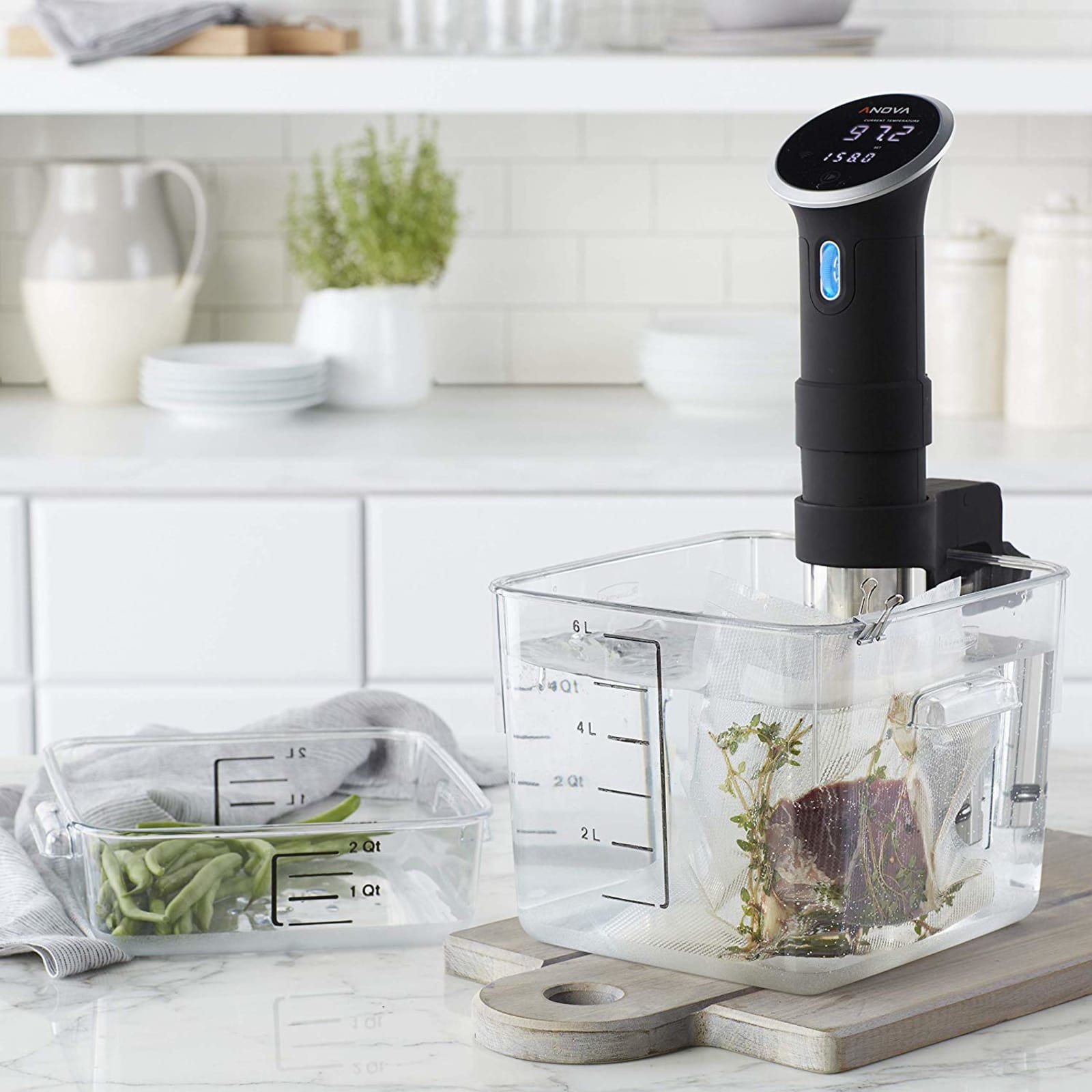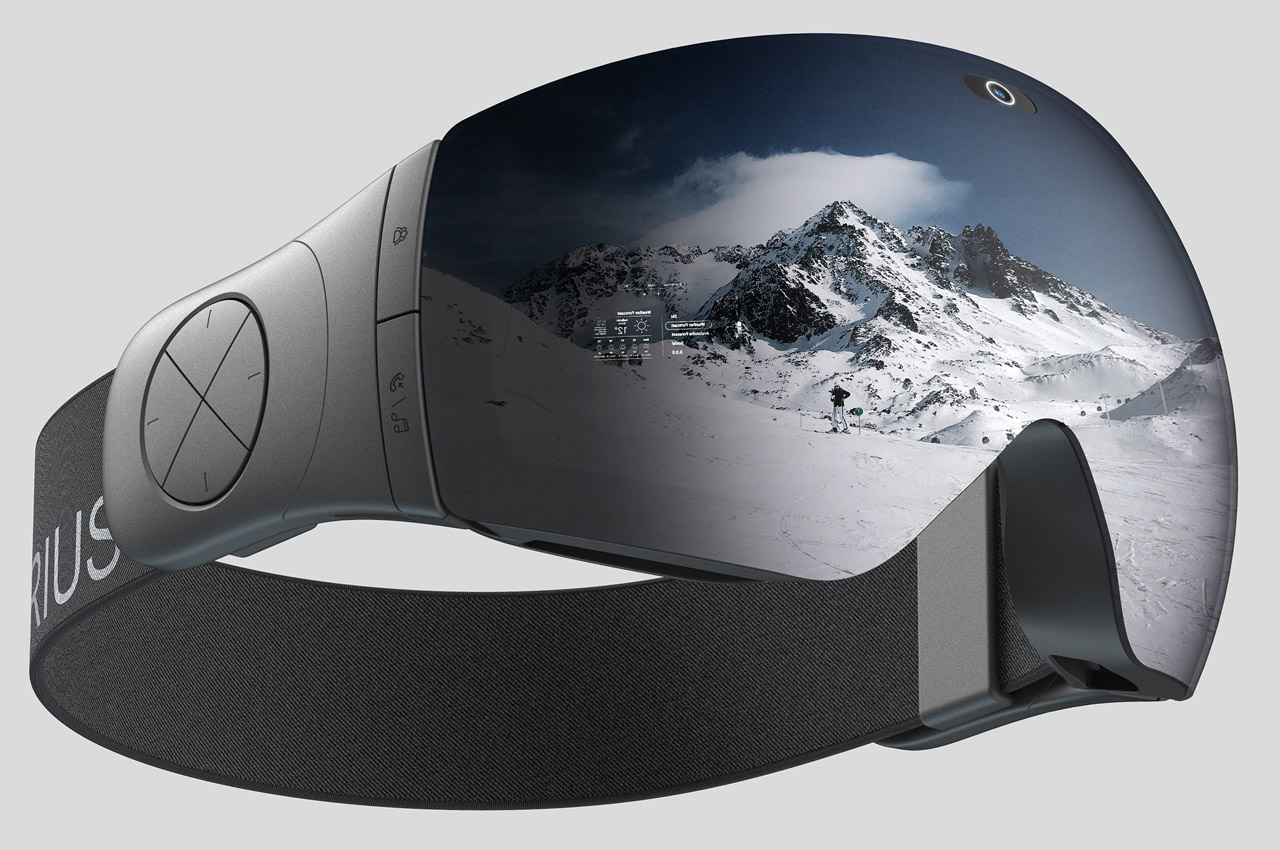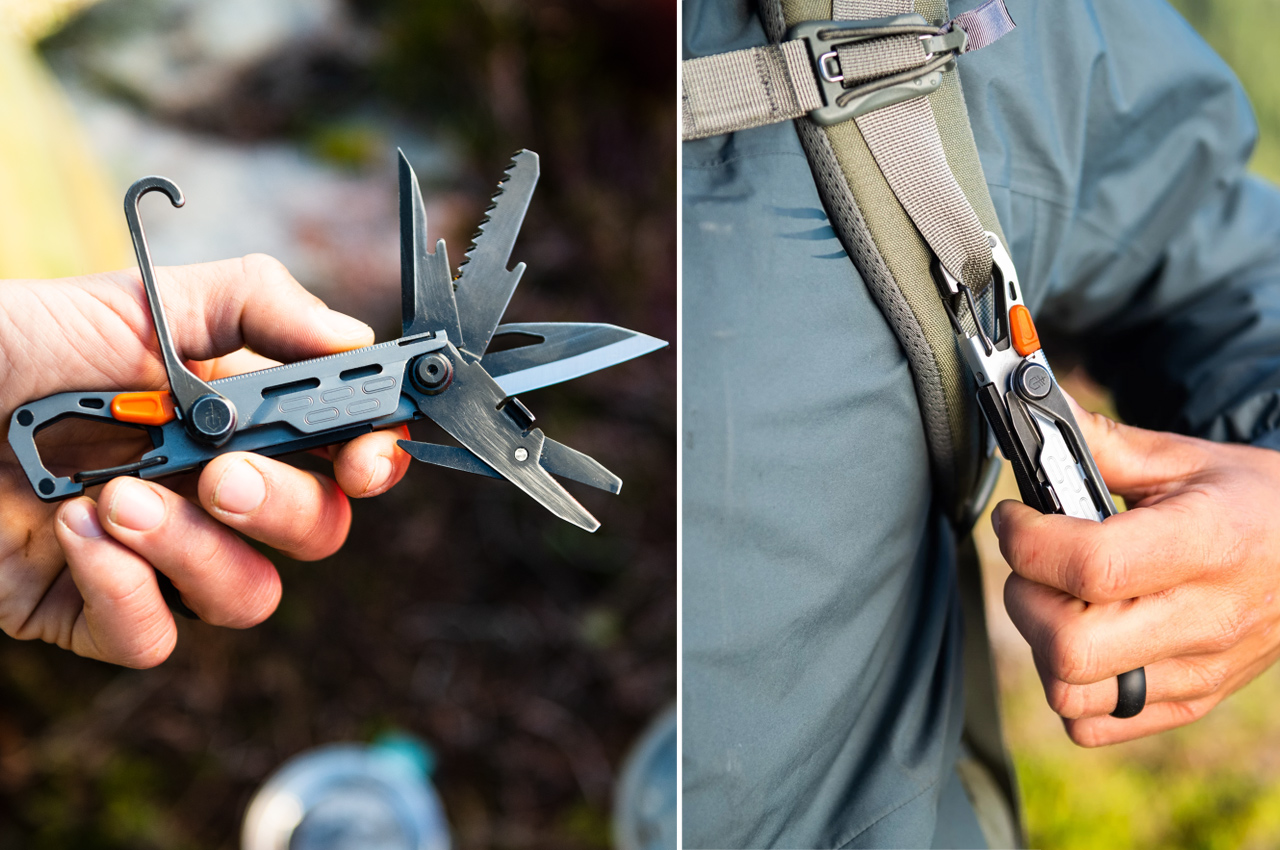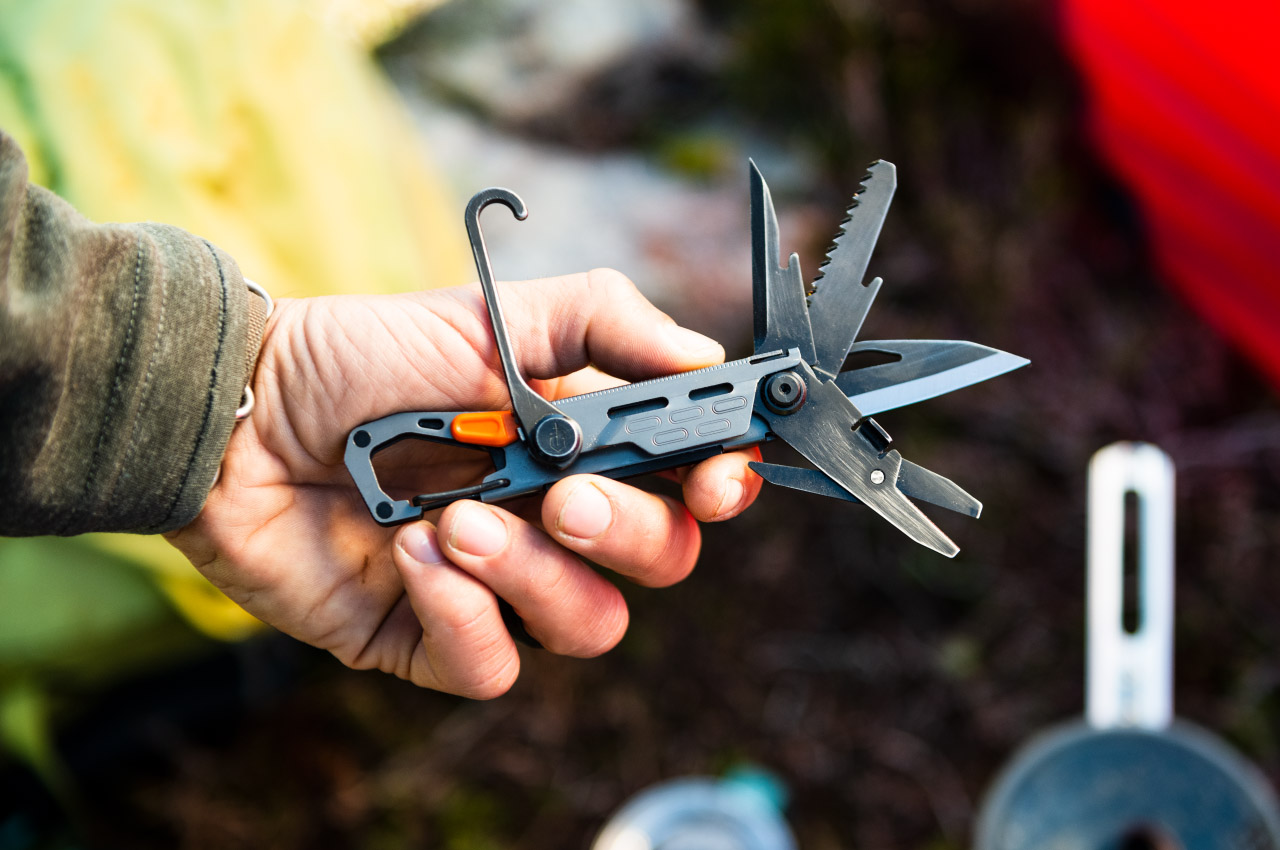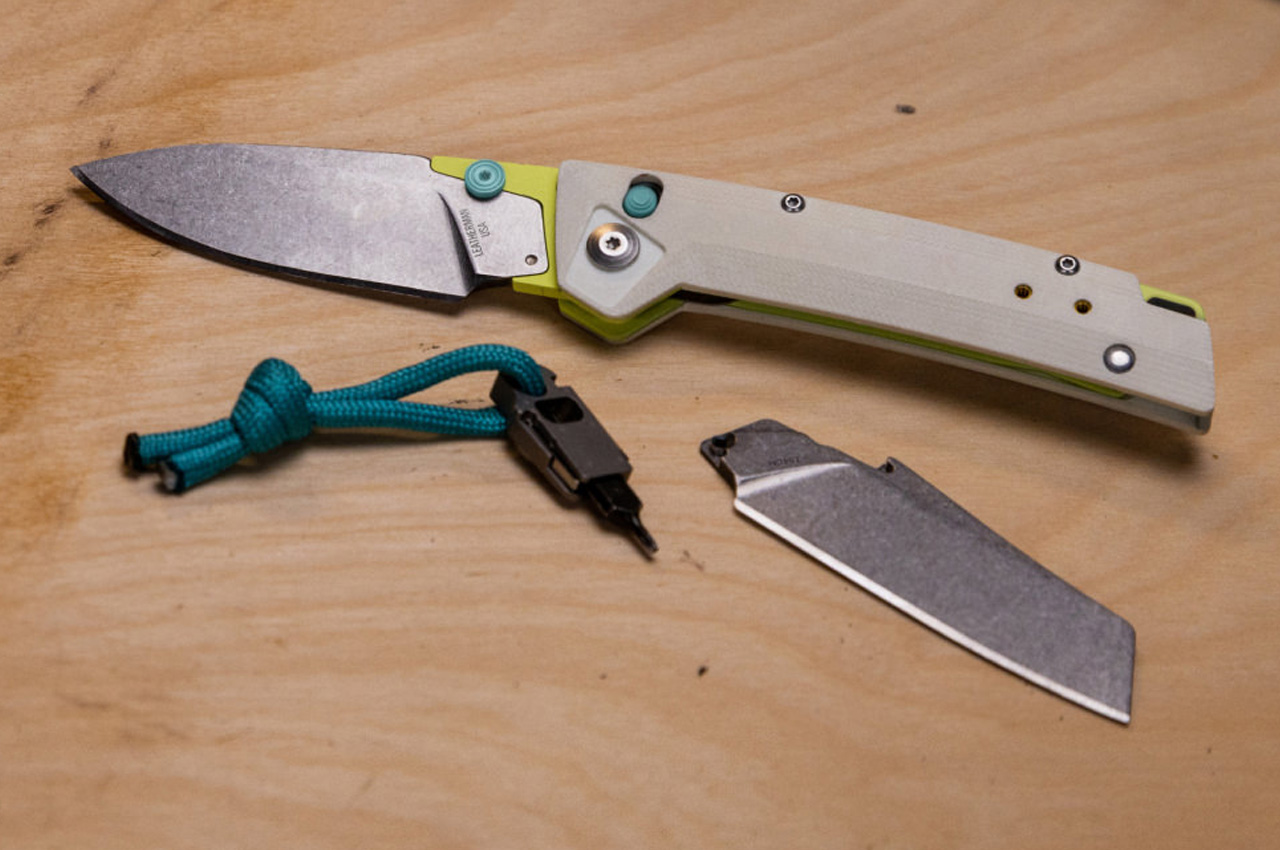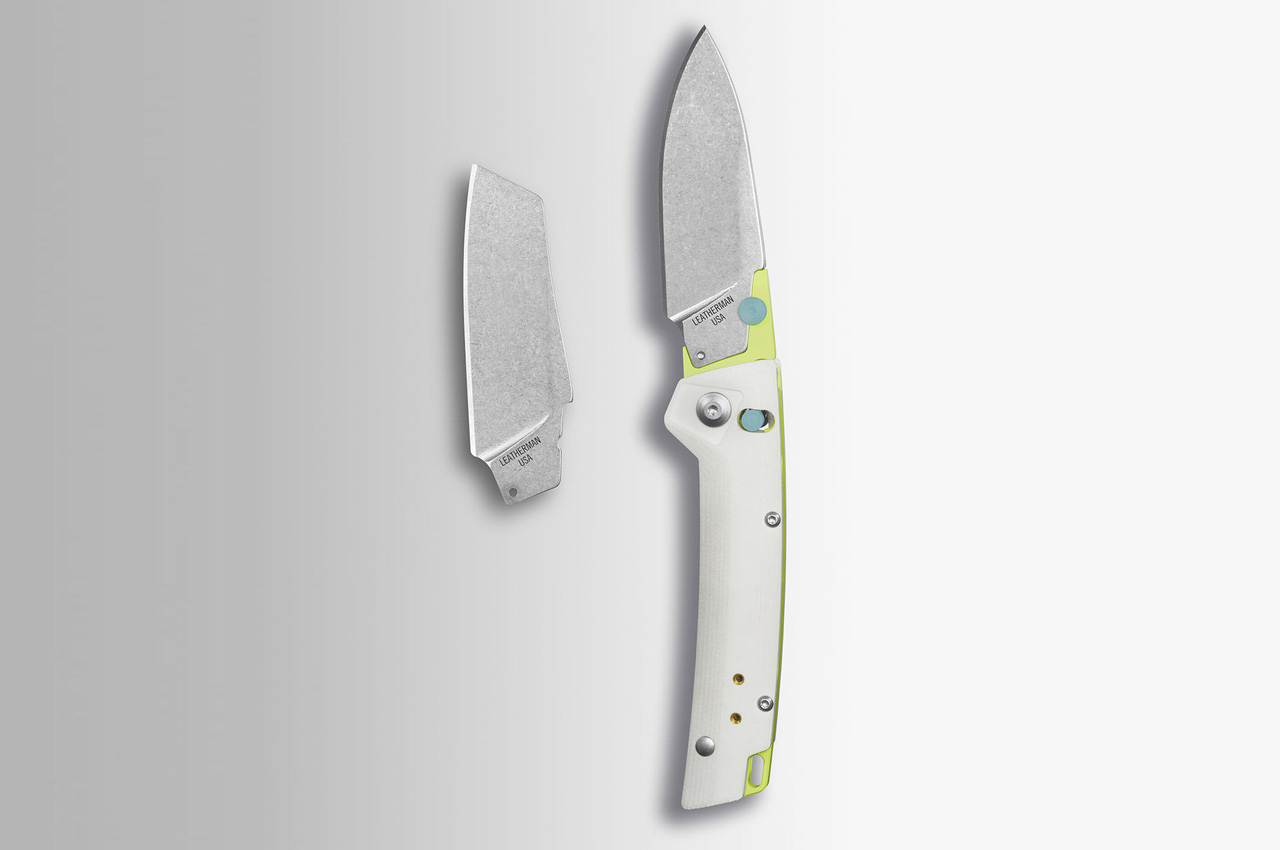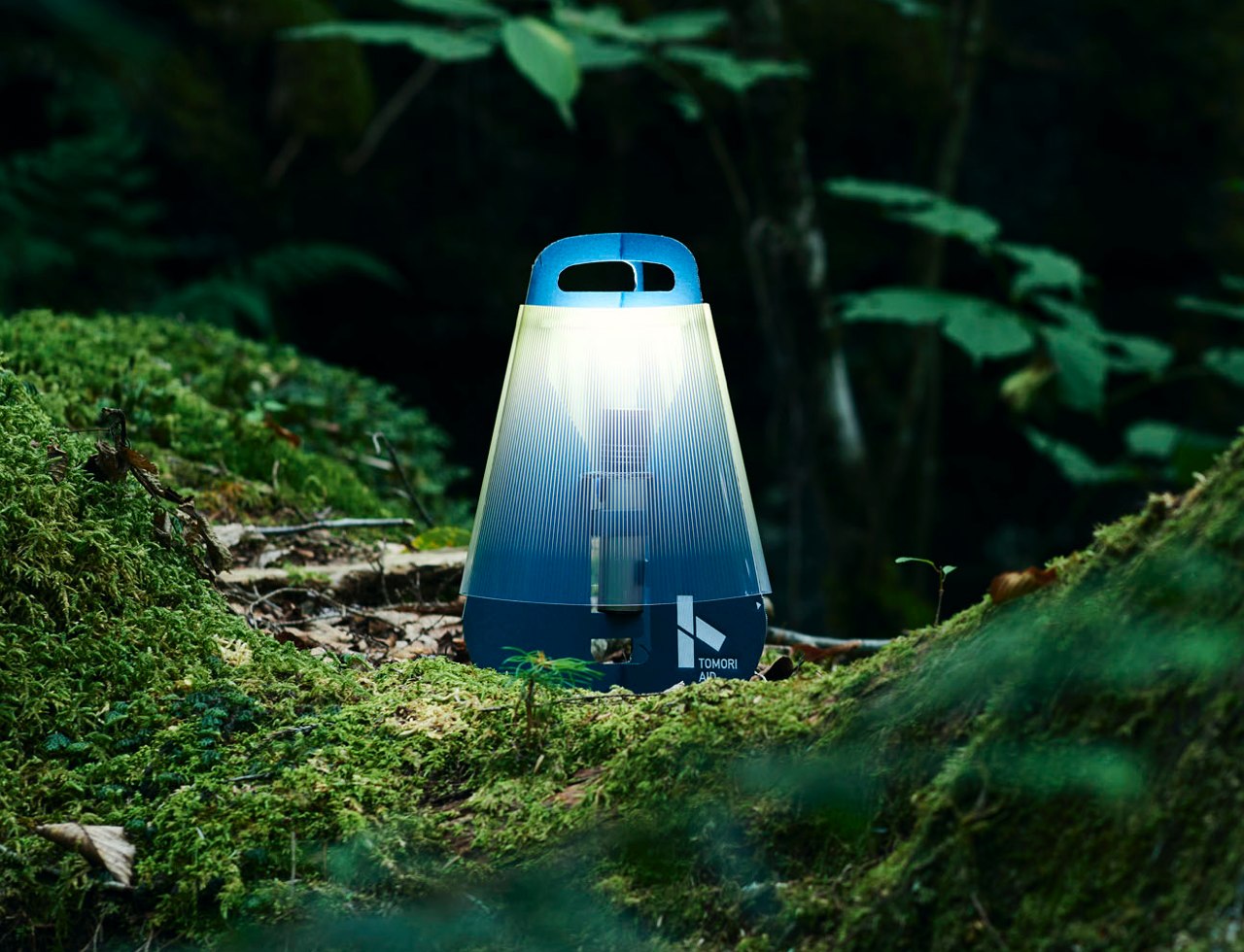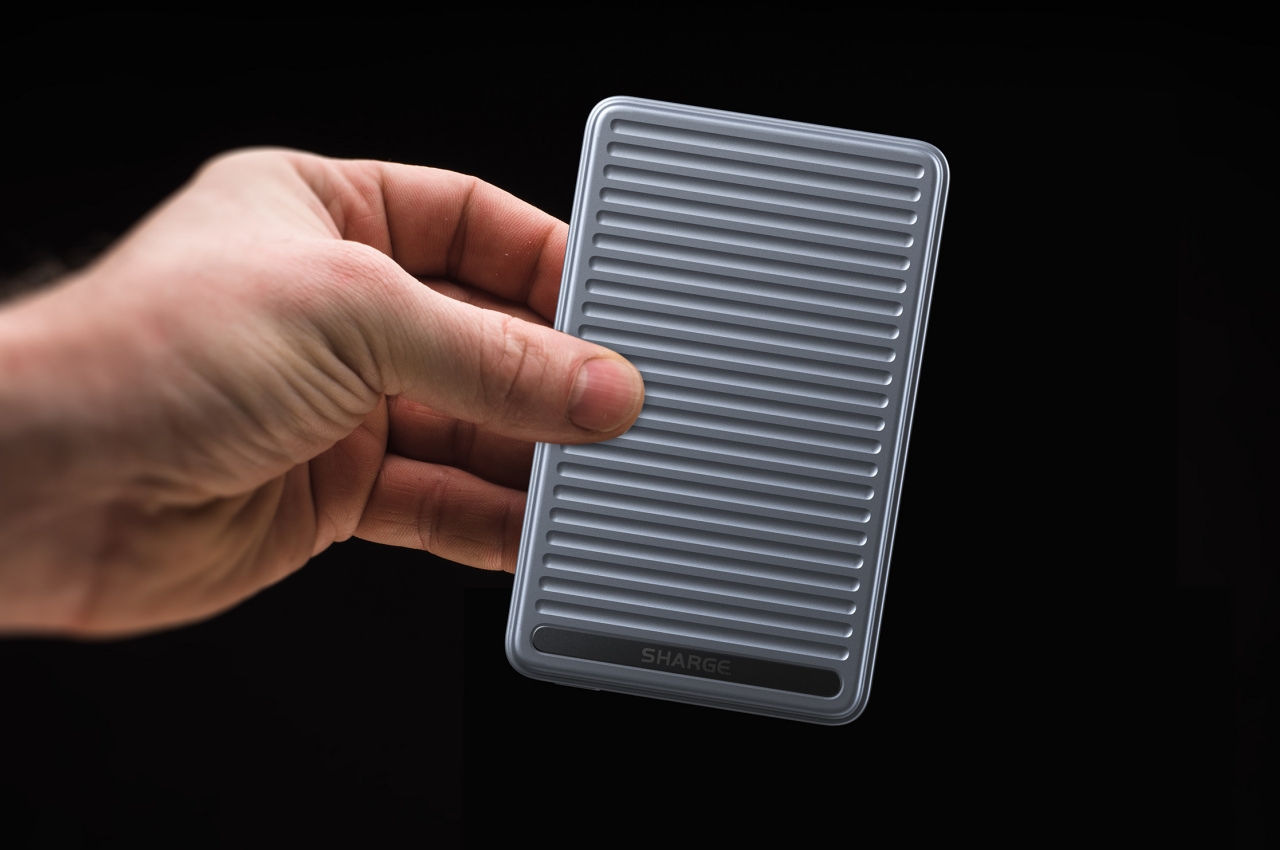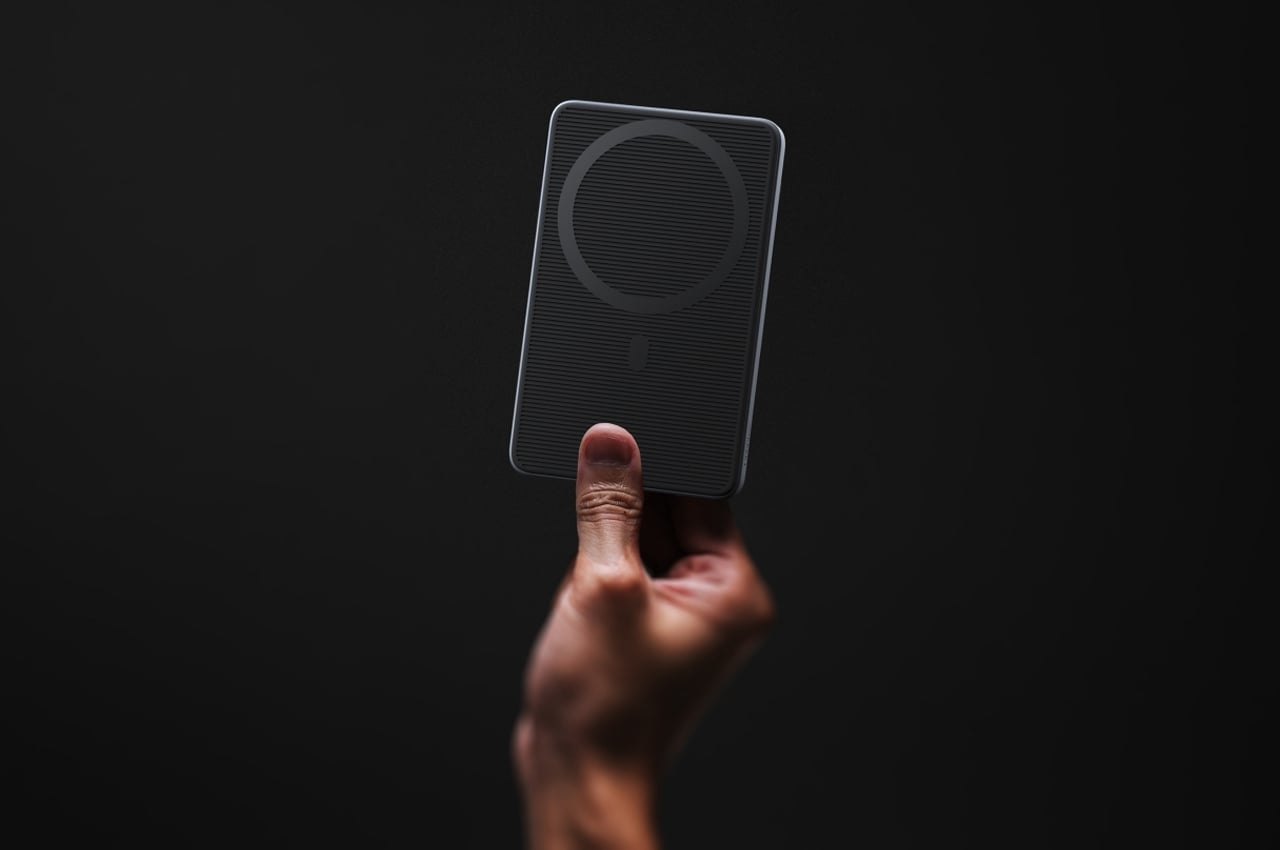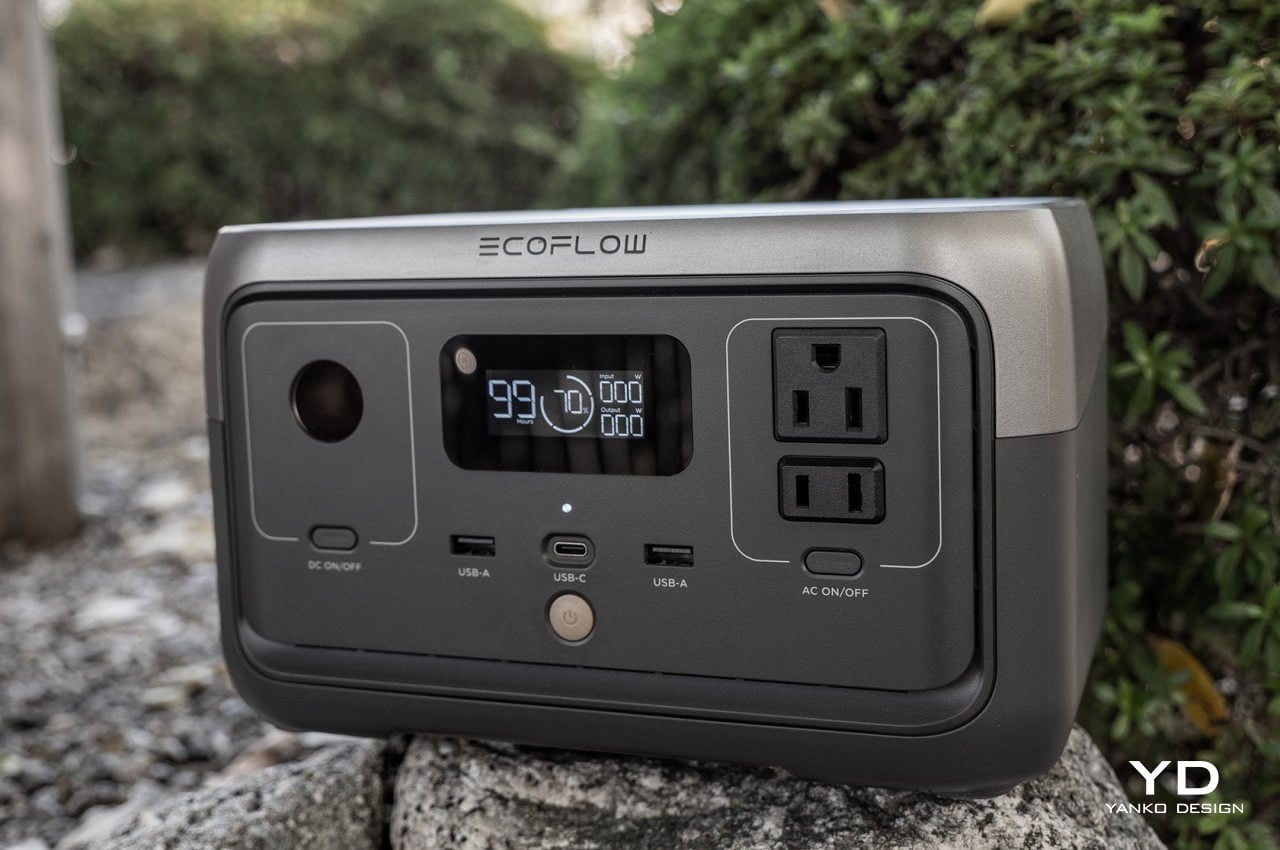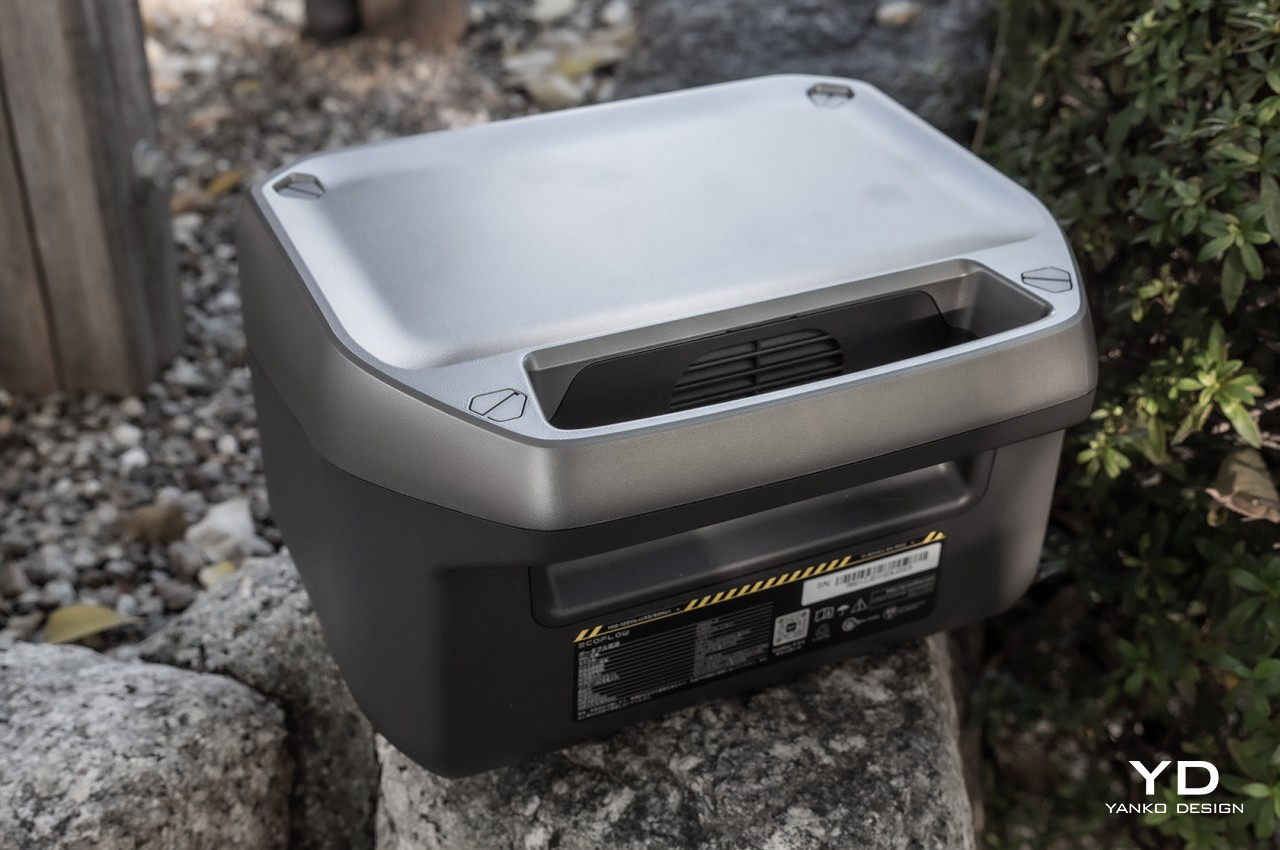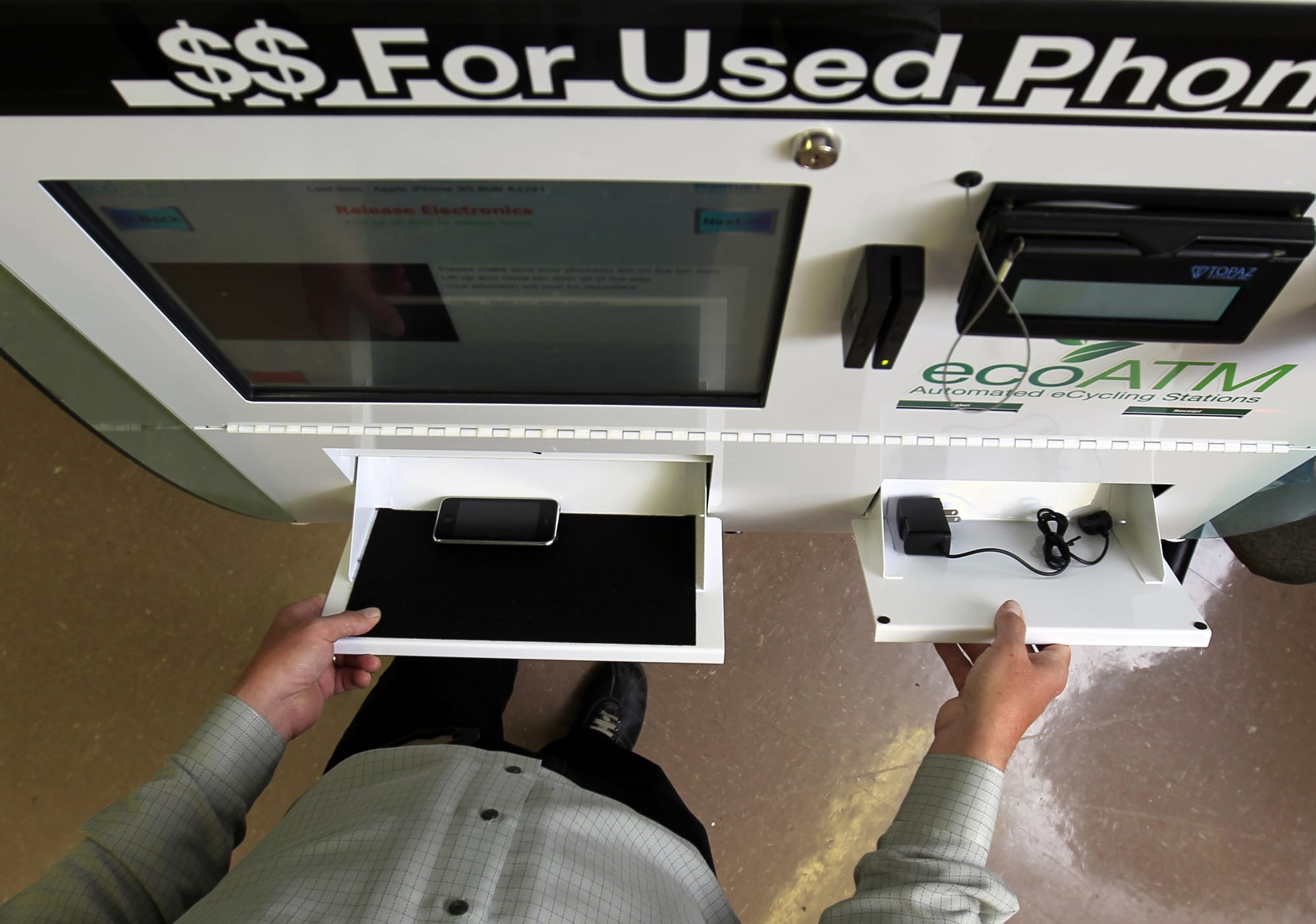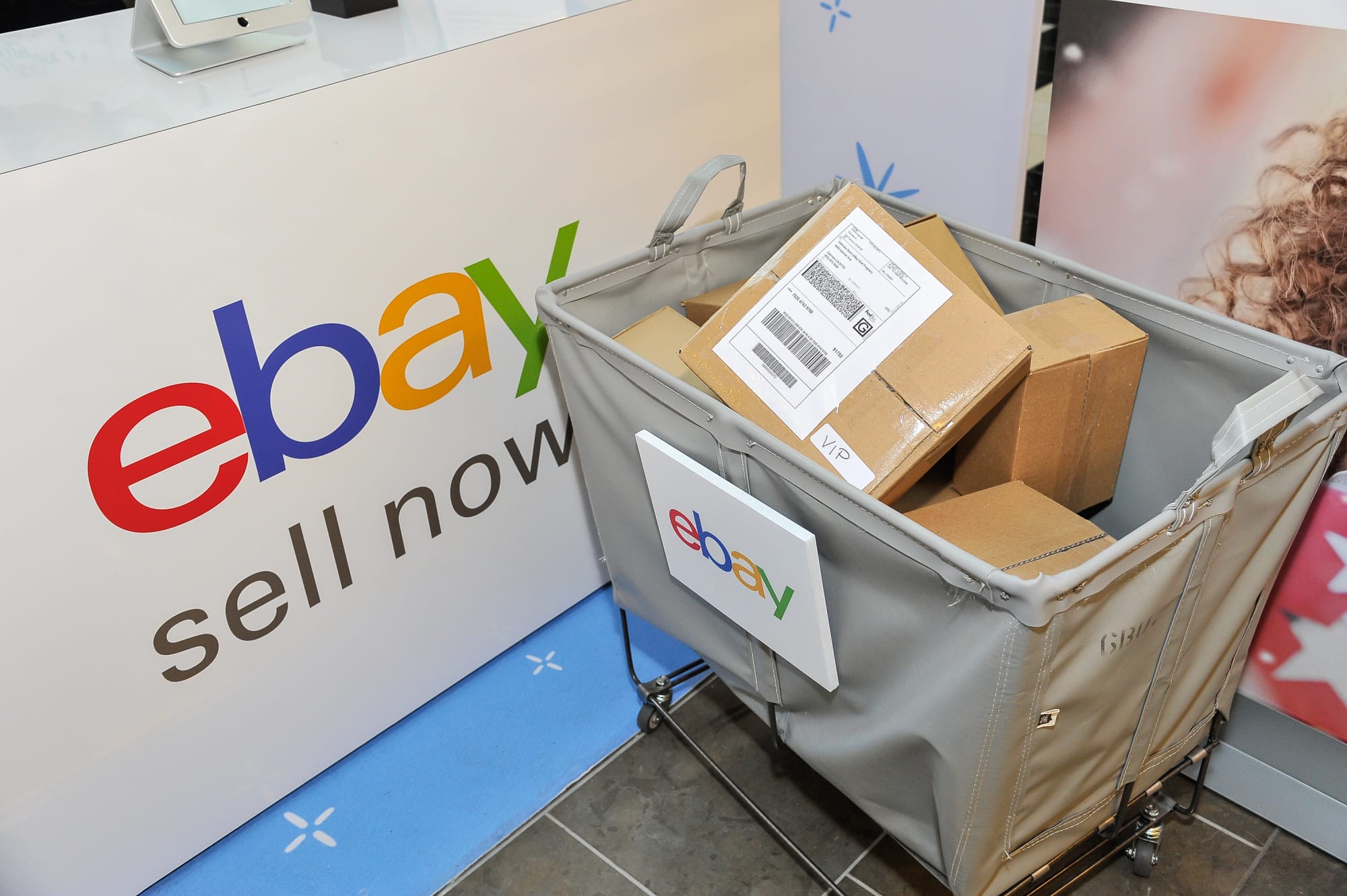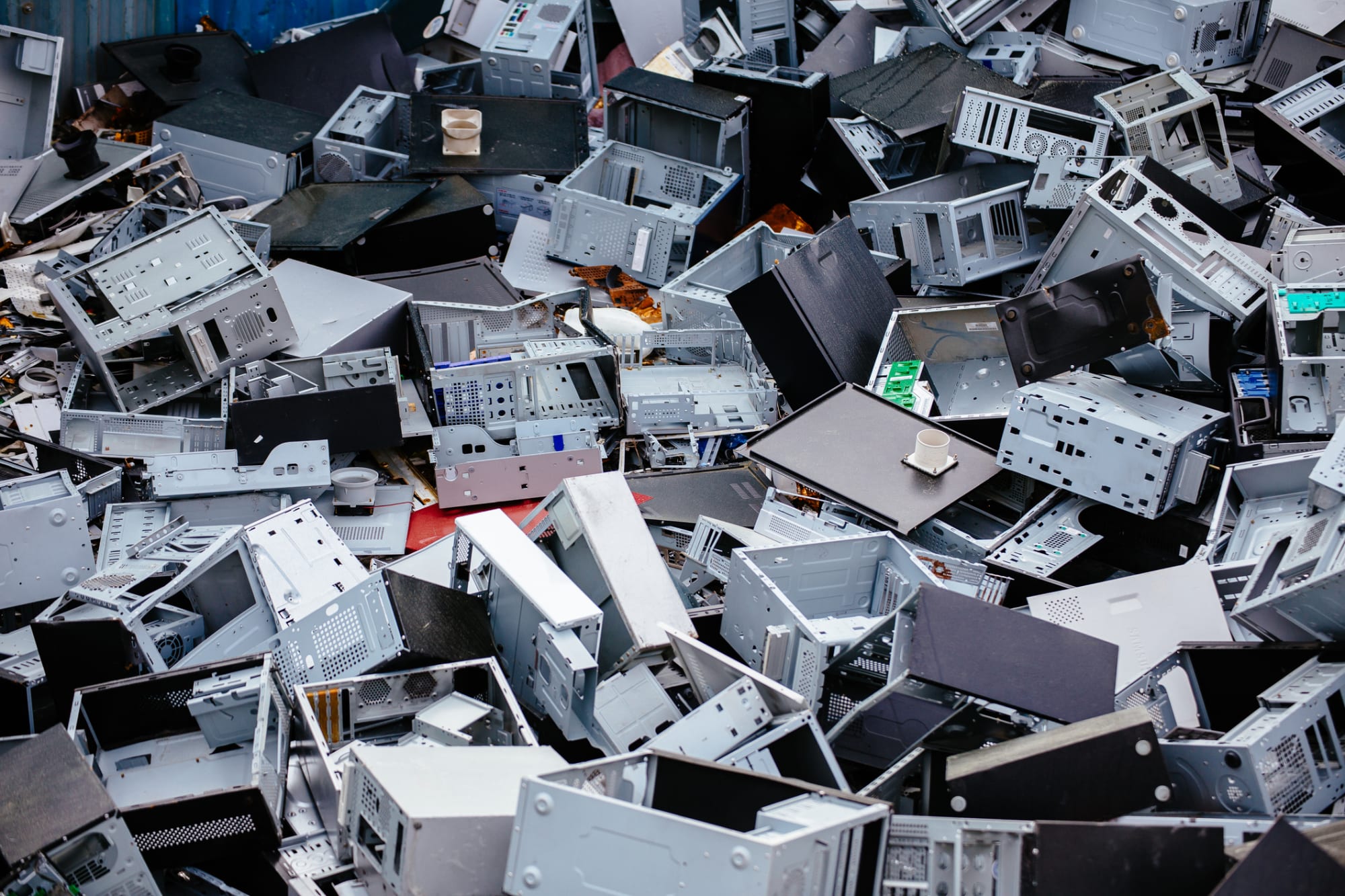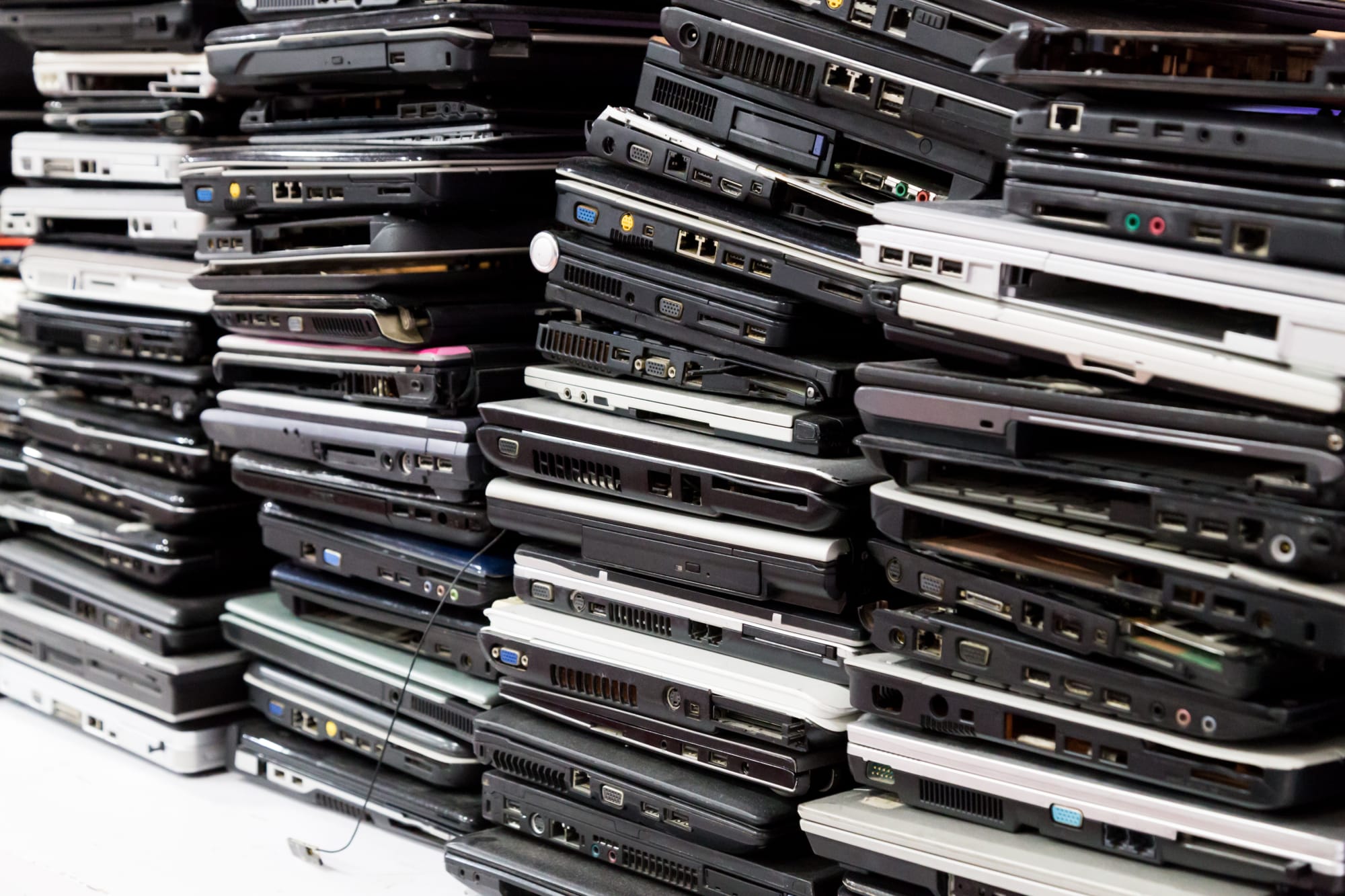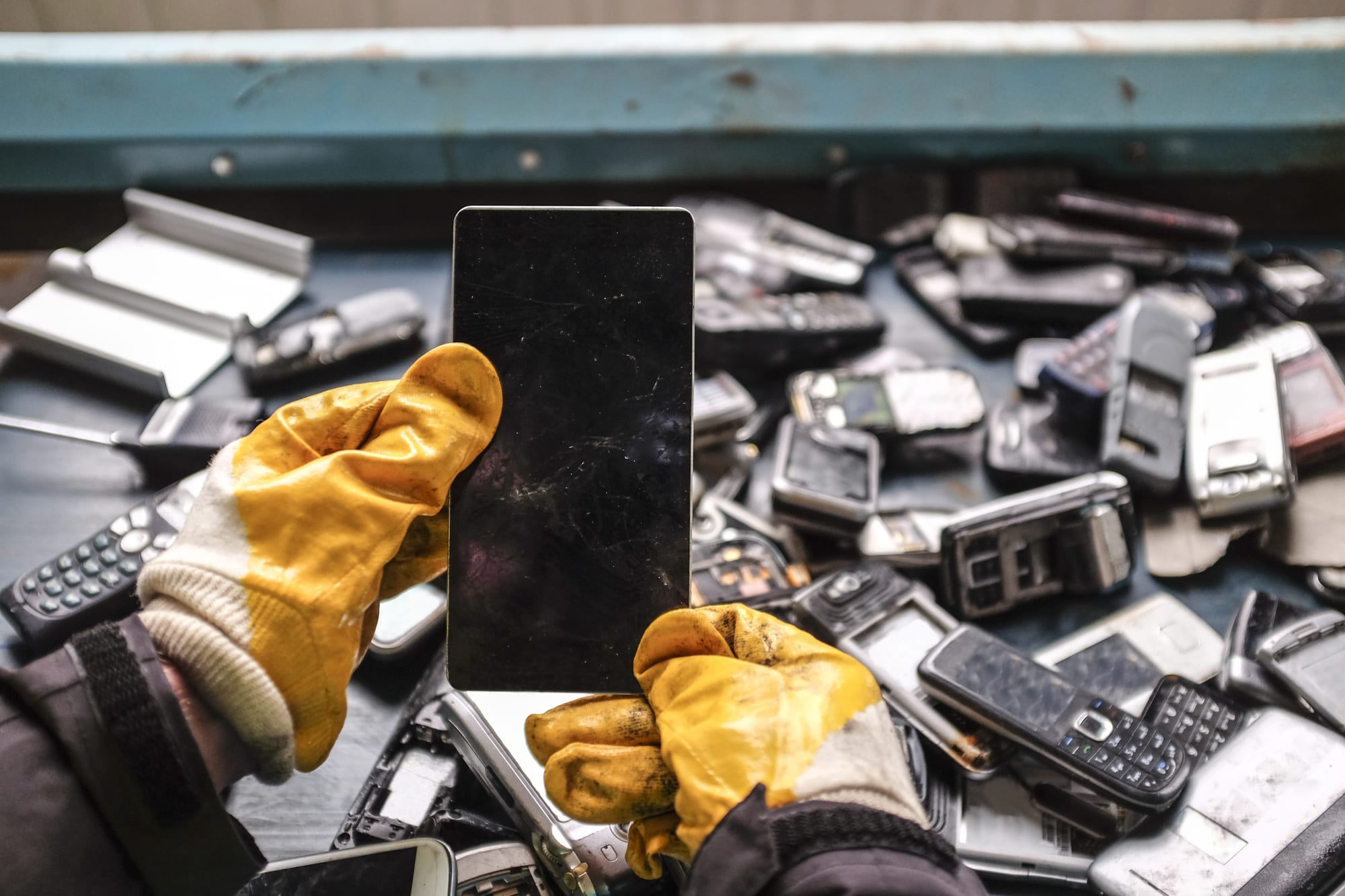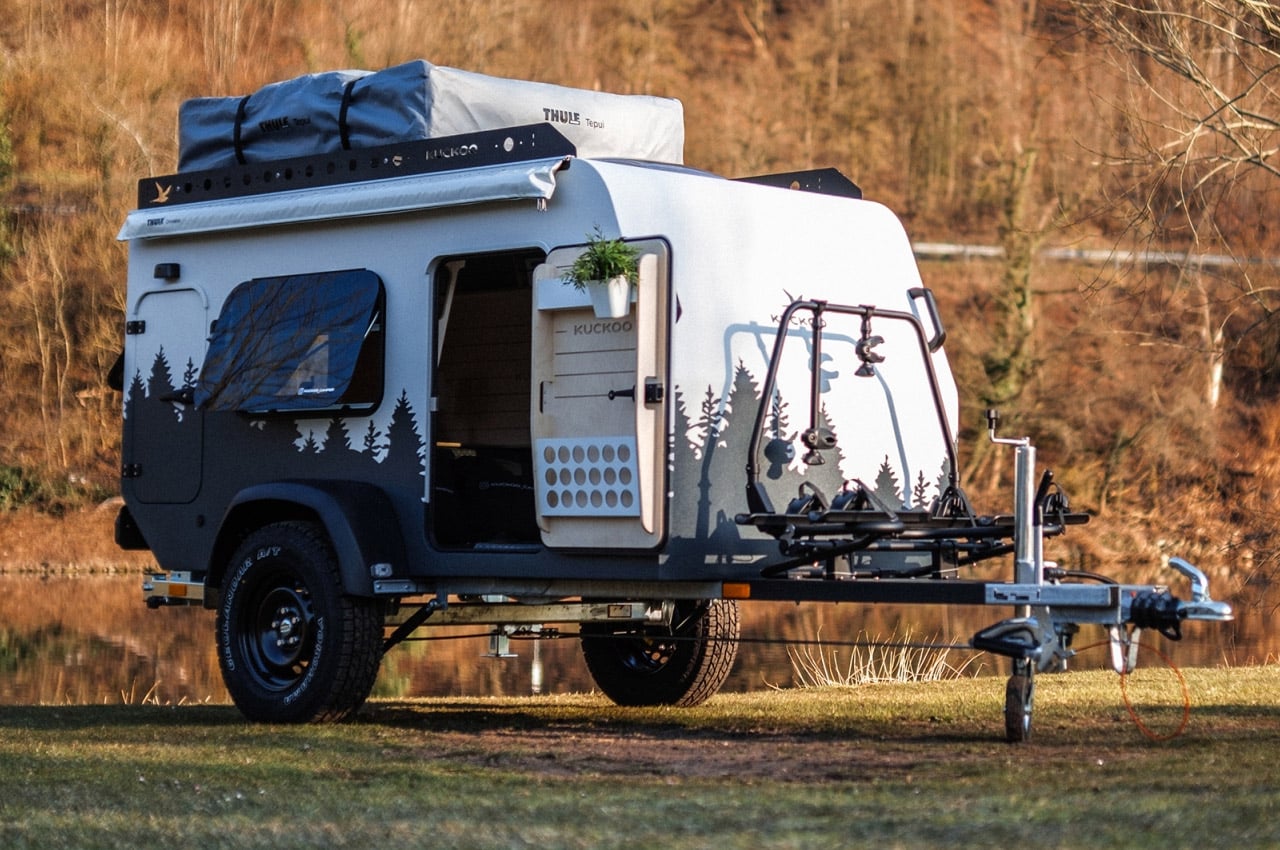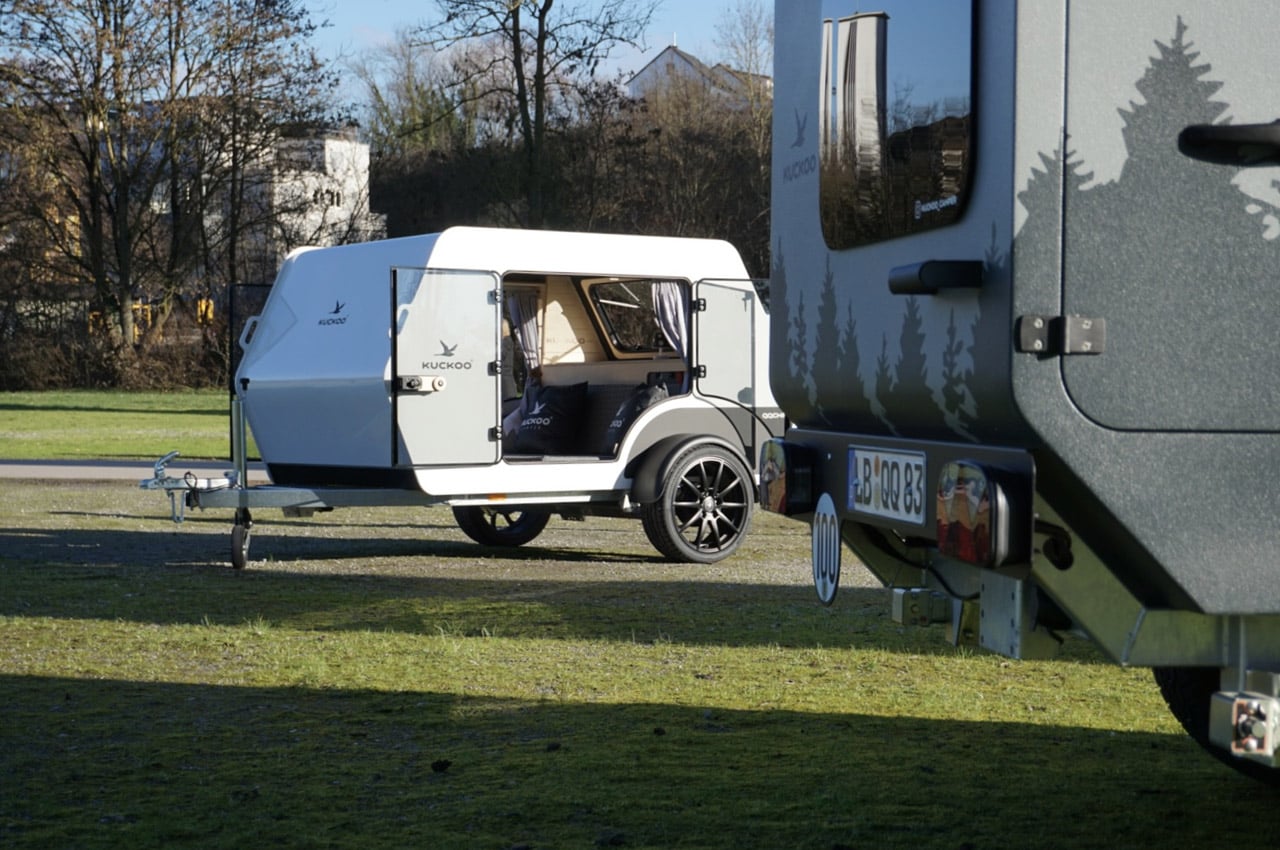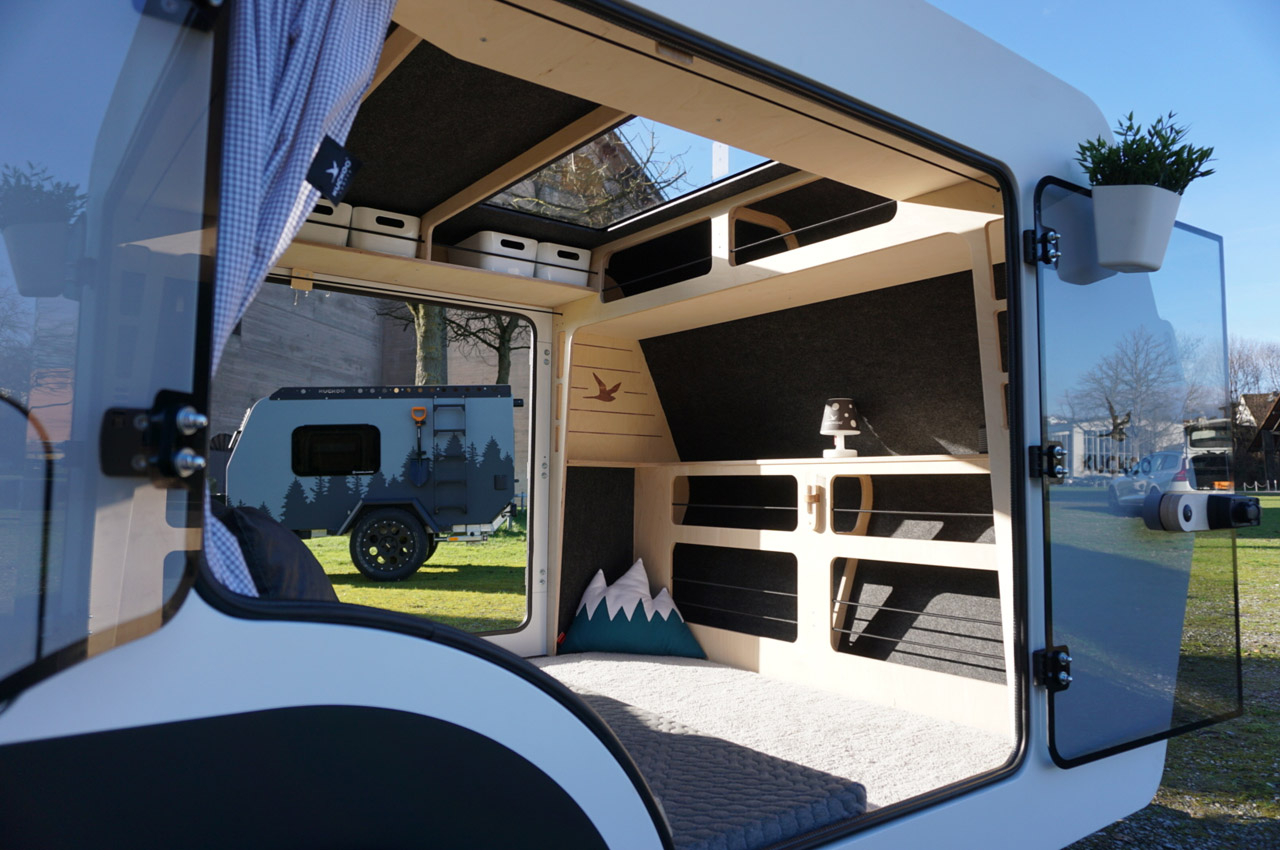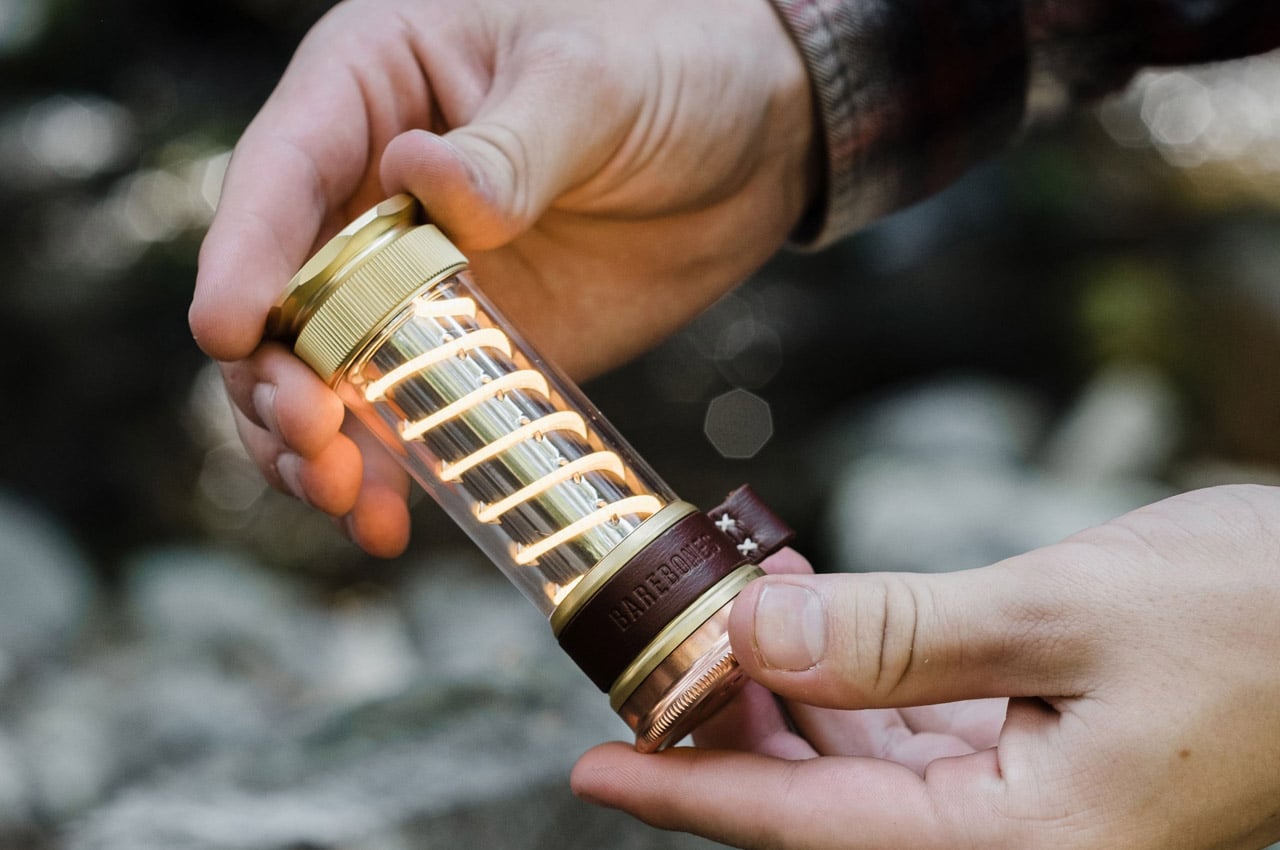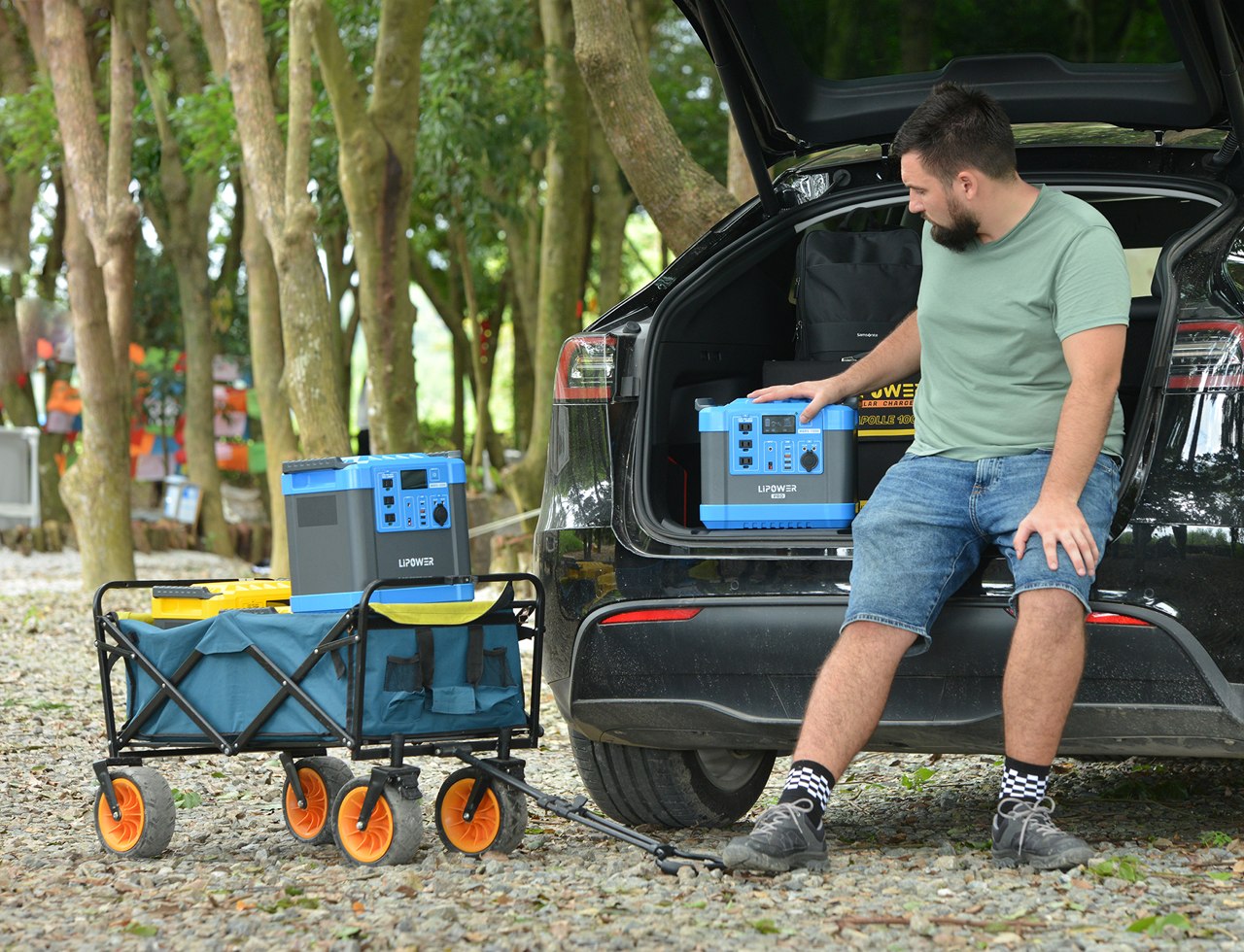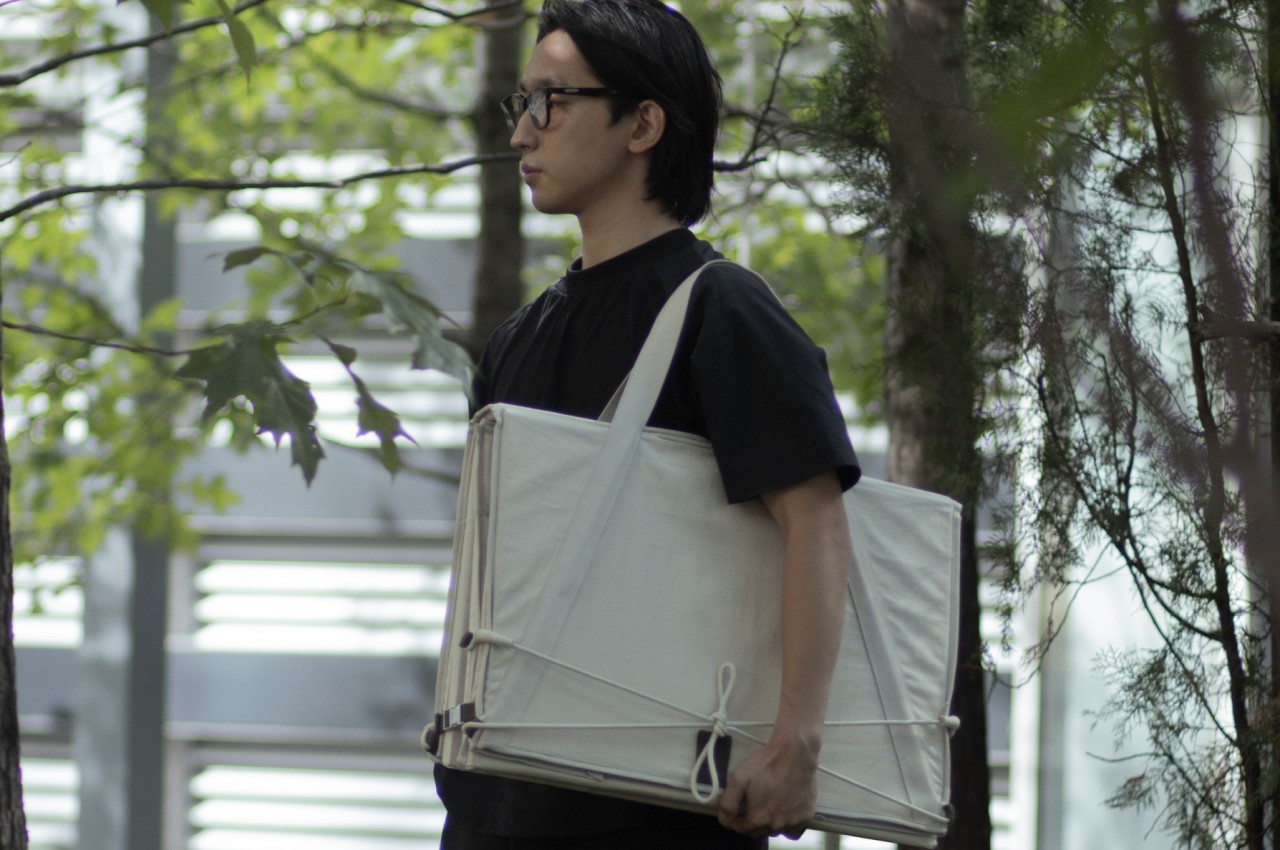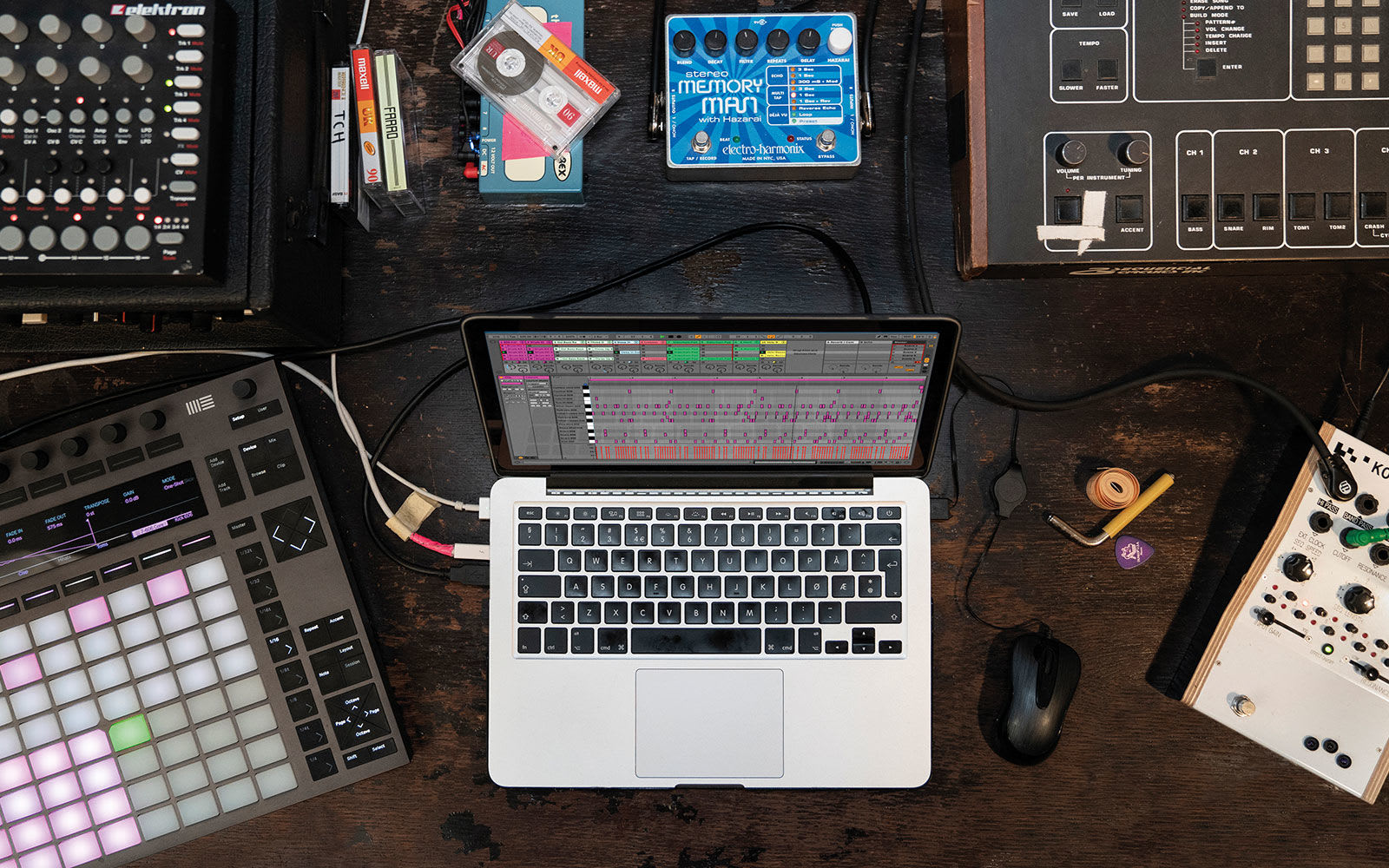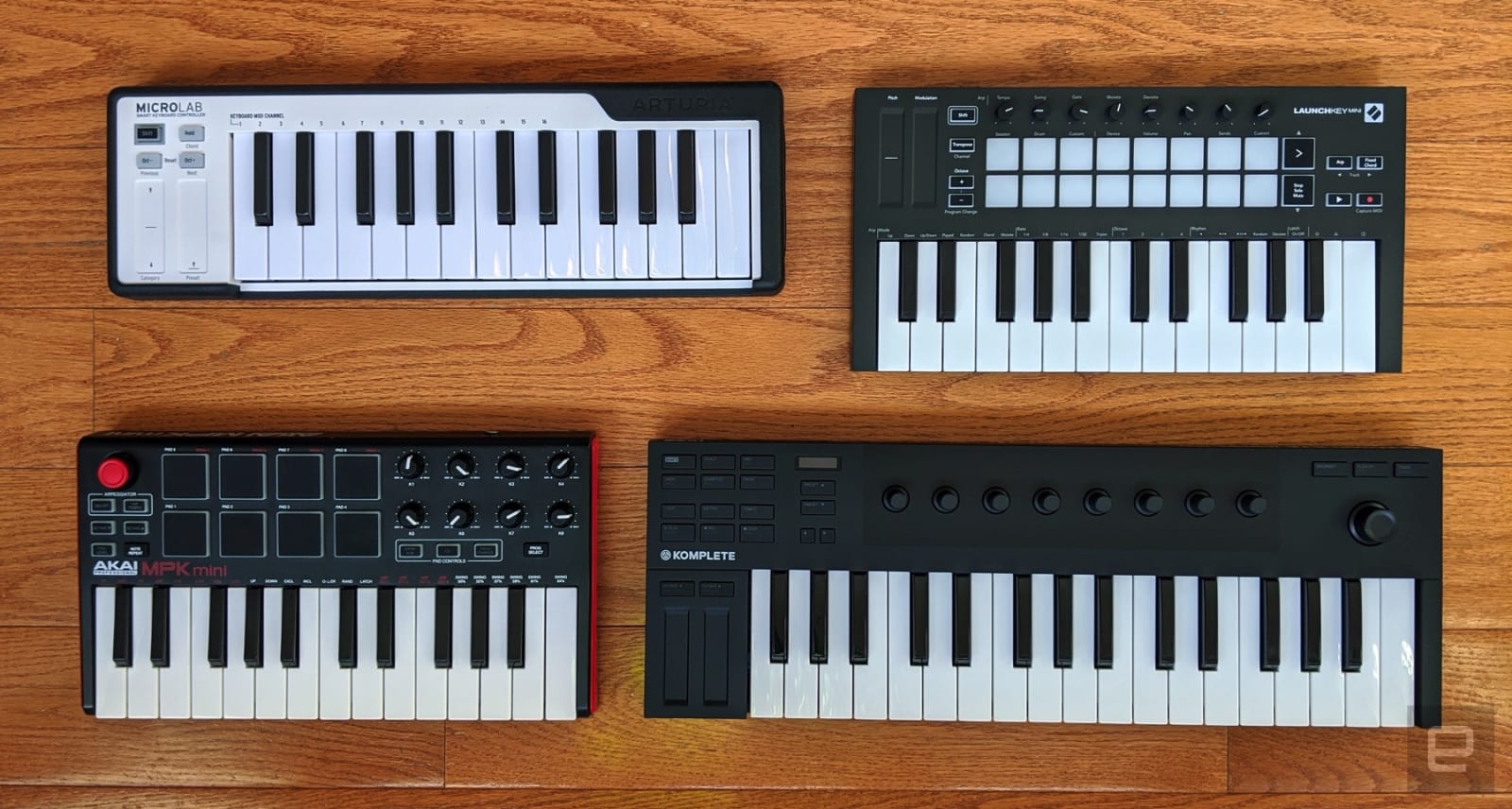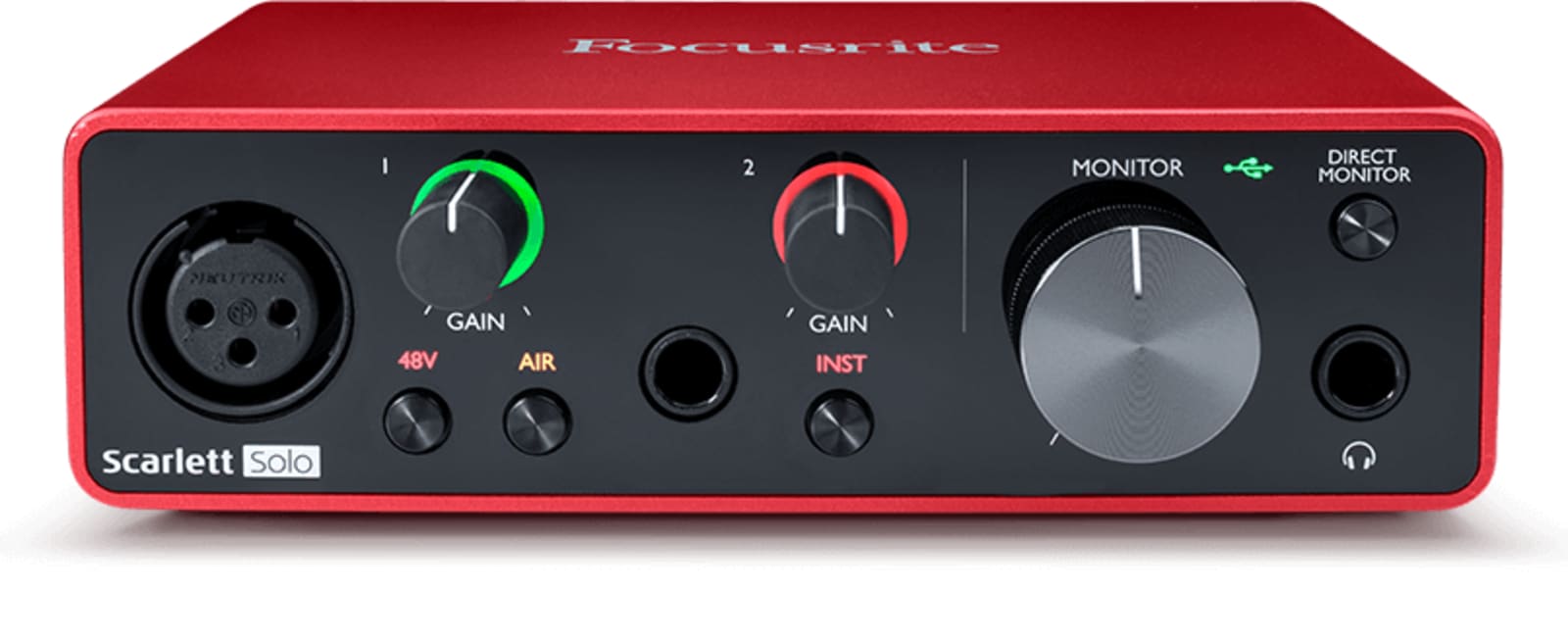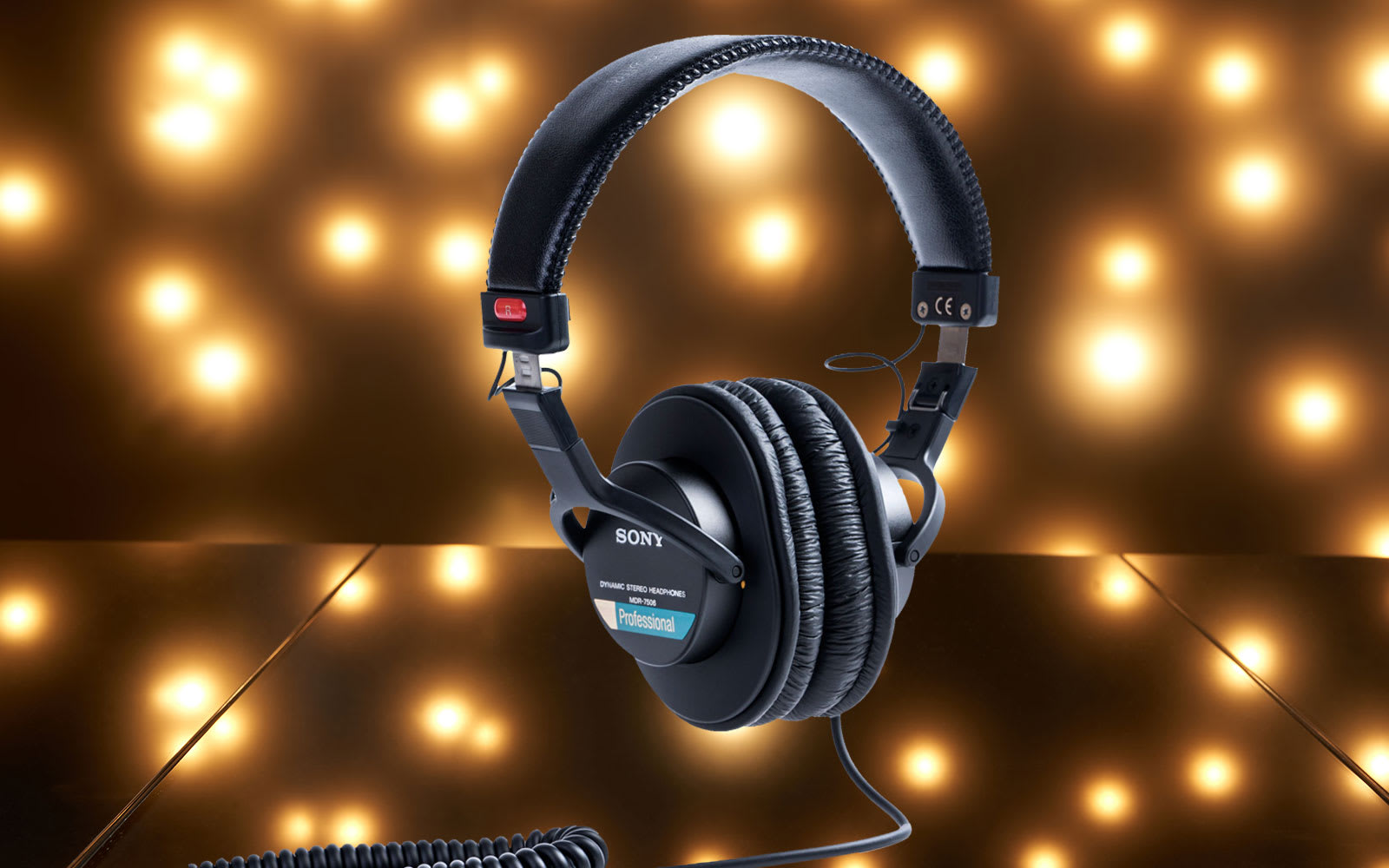
Designer: W2
After a tiring week at work, with the weekend joyfully looming ahead of me, I often find myself fantasizing about a short sweet getaway! Just a few days away from my hectic life, and this hectic world, in a bubble of my own, where all my worries are nowhere to be seen. And with the summer season setting in, I’m definitely in the mood to soak up some sun; and, camping could be a great outdoor activity. Although camping does have a few downsides too – I mean, you have to get down and dirty, live life on the road, and tackle the moodiness of the elements. In such a scenario, having a set of trustworthy and handy camping products can make a world of difference! Having the right products by your side can make your life much easier during those crucial moments. From a portable power station to a camping chair that doubles up as a carrying tool – we’ve curated some fun and functional camping designs for you. Enjoy!
1. The LIPOWER Mars-2000
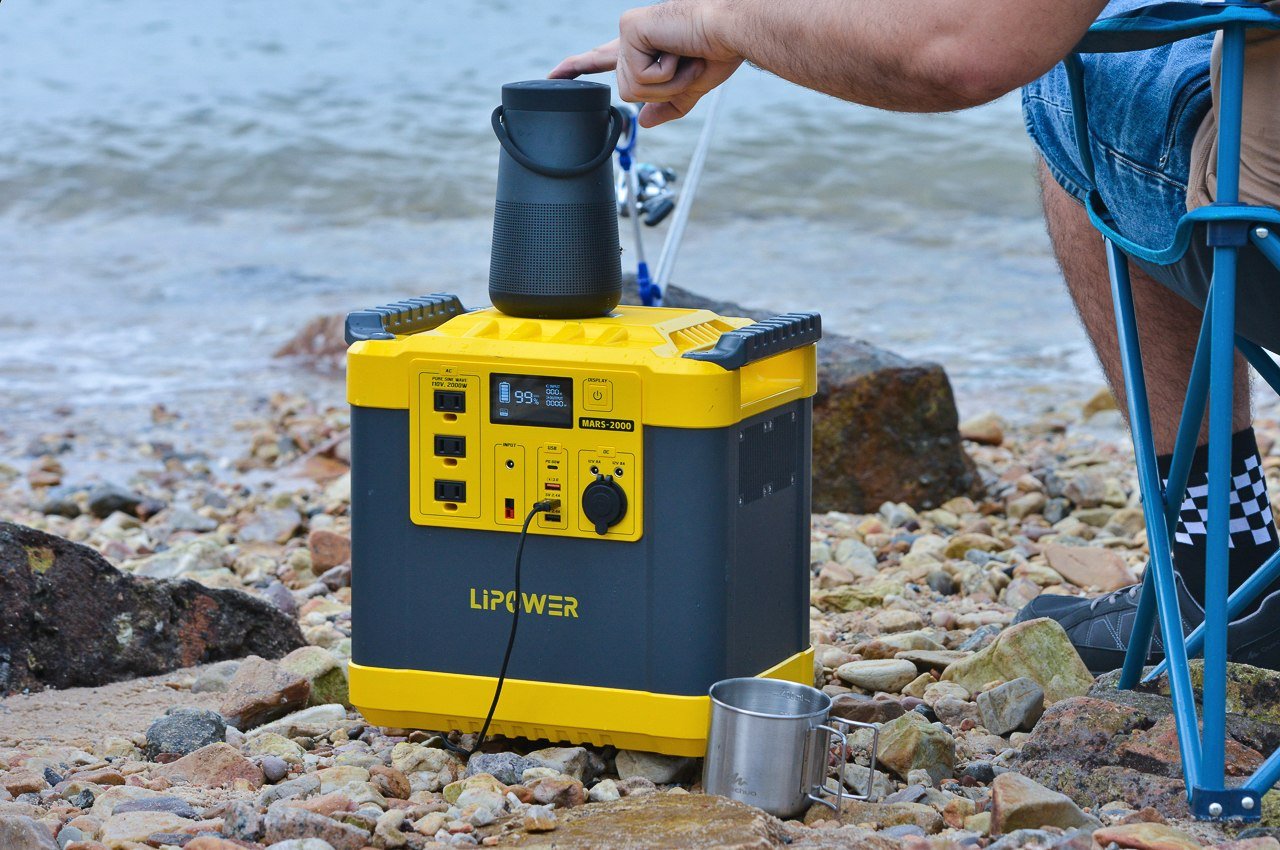
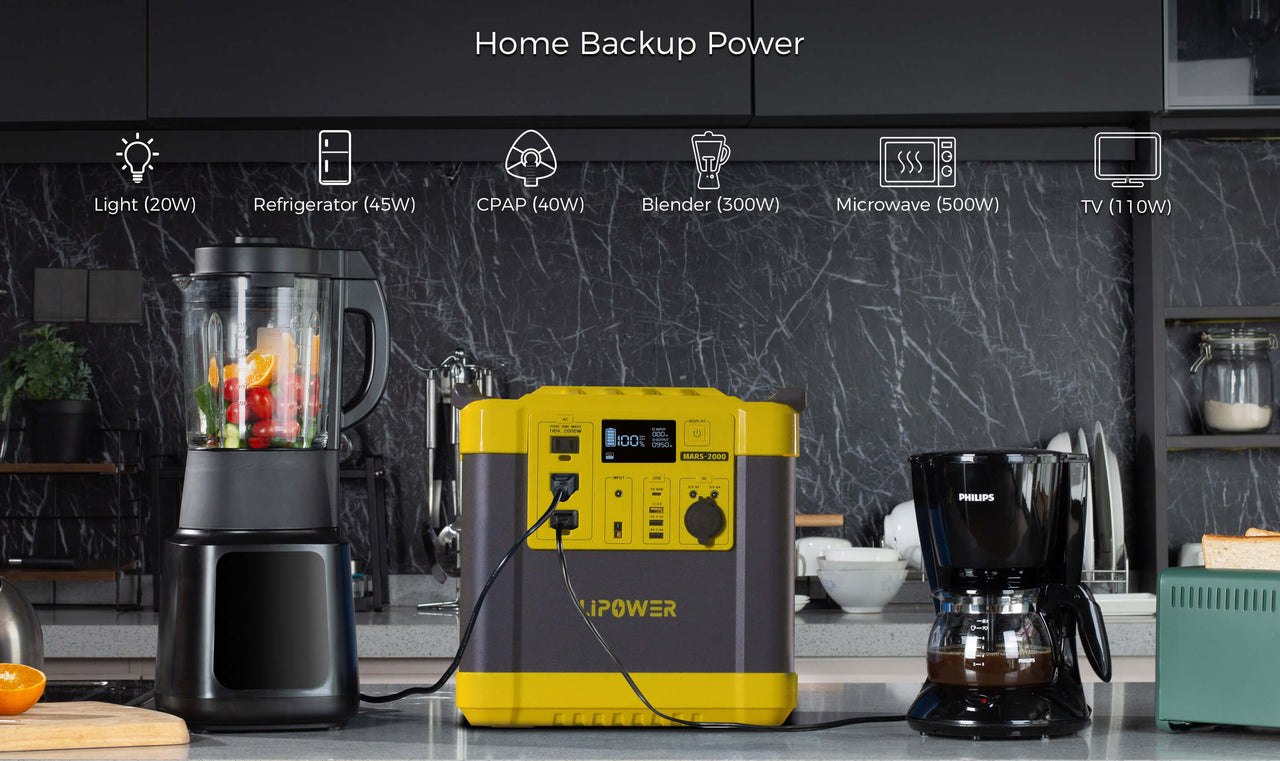
Meet the LIPOWER Mars-2000, a beer-cooler-sized power station that gives you up to 2000W of power no matter where you are. Whether you’re camping outdoors, spending a cool evening at the beach, going on a road trip, or even taking your camera and drone on a day-long expedition for work or casual photoshoots, the LIPOWER Mars-2000 is a pretty capable portable power source that’s equipped with EV-grade LFP batteries for sustained power no matter what your requirement.
Why is it noteworthy?
The 1460Wh power station weighs 35.5 lbs (16.1 kilograms) and comes with built-in handles that let you load it on the back of a car and carry it pretty much anywhere you want. The LIPOWER Mars-2000 offers 10 different ports to charge/power a whole slew of devices, including 3 110V AC ports, 3 12V DC ports (including one car outlet), 3 USB-A ports (including one USB3.0 port for fast charging), and one USB-C port that outputs 60W, making it perfect for phones, tablets, and even laptops.
What we like
- There’s also an input for plugging solar panels into the LIPOWER Mars-2000, charging it via solar energy up to 80% in 5 hours, according to its makers, LIPOWER
What we dislike
- It is a bit bulky to be carrying around in the outdoors
2. Tekto F2 Bravo Knife
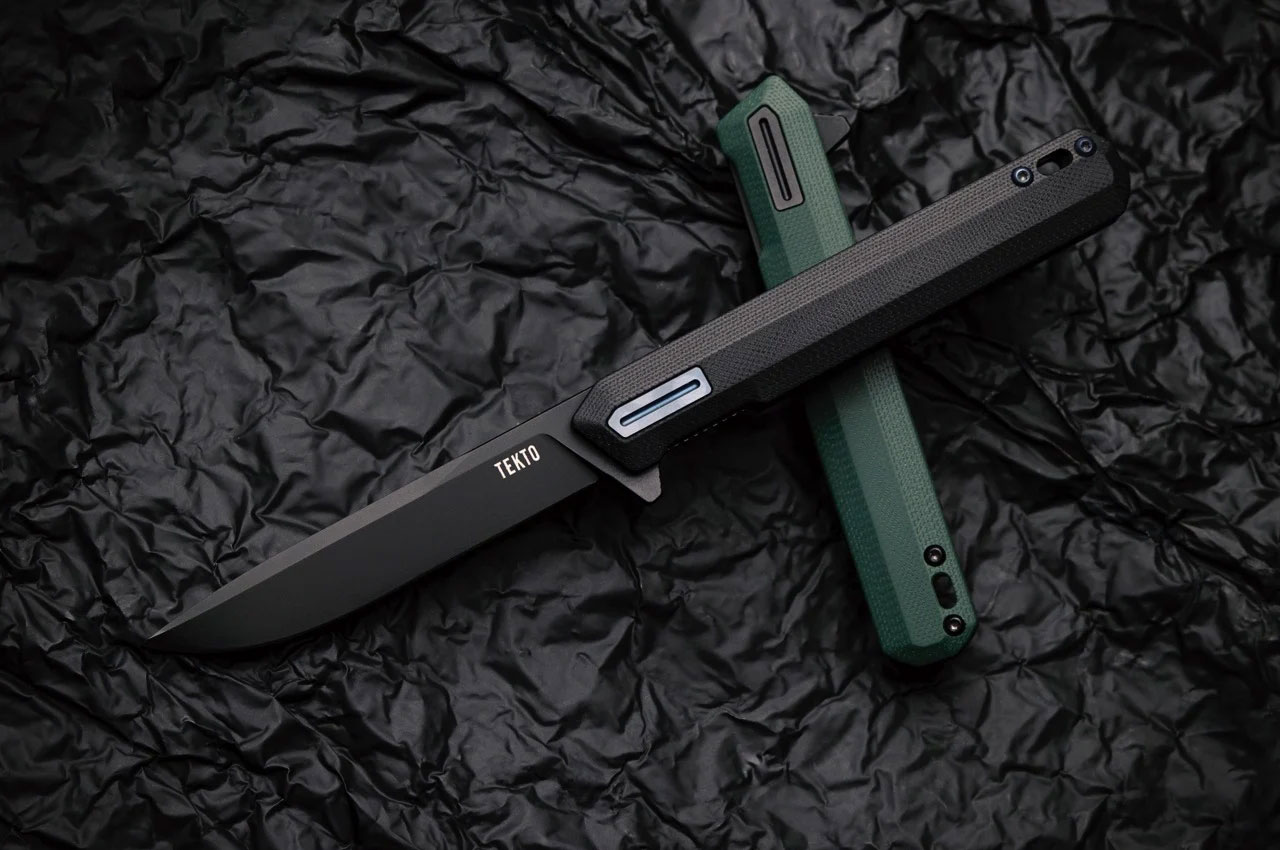
EDC’s often get lost in the sea of multi-functional gadgets. Sure, some of the 12 tools in the kit may be of use every now and then, but most times, all we need is an elegant knife. Tekto F2 Bravo delivers that exact seamless luxury yet functional experience with its sharp design.
Why is it noteworthy?
The knife’s blade is made suing 2 materials, Forged Carbon and G10 and uses ceramic ball bearings to ensure that the blade-flipping motion remains smooth after repeated use.
Click Here to Buy Now: $127.50 $149.99 (15% off with Coupon Code “Yanko”). Hurry, the deal ends in 48 hours!
What we like
- The drop point, made of strong D2 steel, cuts through a variety of materials easily.
- Weighing just 68g, it easily fits into any bag or pocket, allowing you to literally carry this EDC on an everyday basis.
What we dislike
- The blade comes with one variant – the Titanium-Coated D2 Steel and offers no alternative for anyone wanting any other option.
3. Foldable Lander
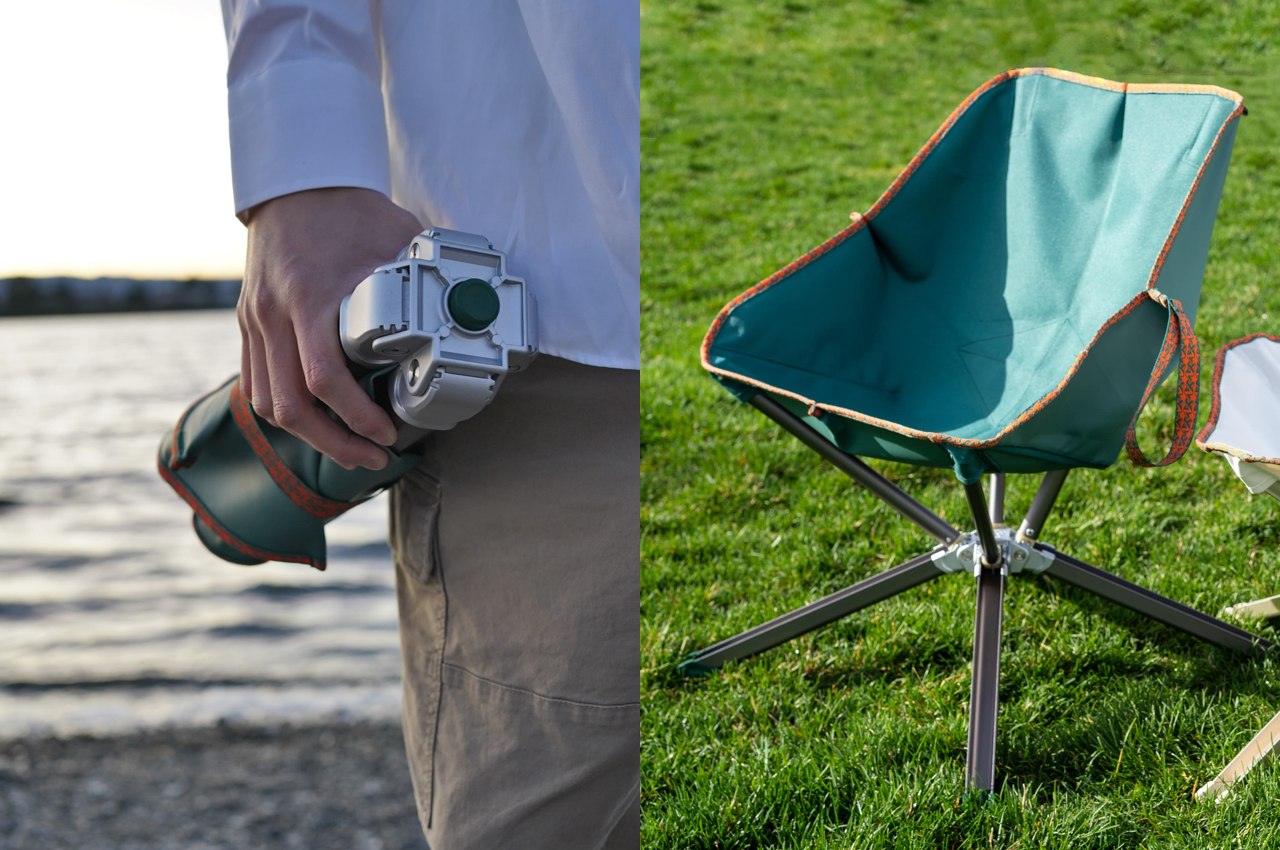

Power stations help us carry electricity to the outdoors, tactical EDC helps us service in life-threatening situations, and chairs like the Foldable Lander make sitting much more comfortable in the outdoors.
Why is it noteworthy?
Designed to be compact and lightweight, the Foldable Lander measures a little over 13 inches in length when closed and weighs 2.8 lbs. Open it up, however, and it transforms into a comfortable chair with a backrest, capable of taking up to 100x its weight.
What we like
- Bases itself on the principles of origami and the design of the Moon Lander’s four-legged landing mechanism
- Compact enough to strap to your backpack and weighs less than a 6-pack of beer
What we dislike
- No details on
4. Makit’s Portable Microwave
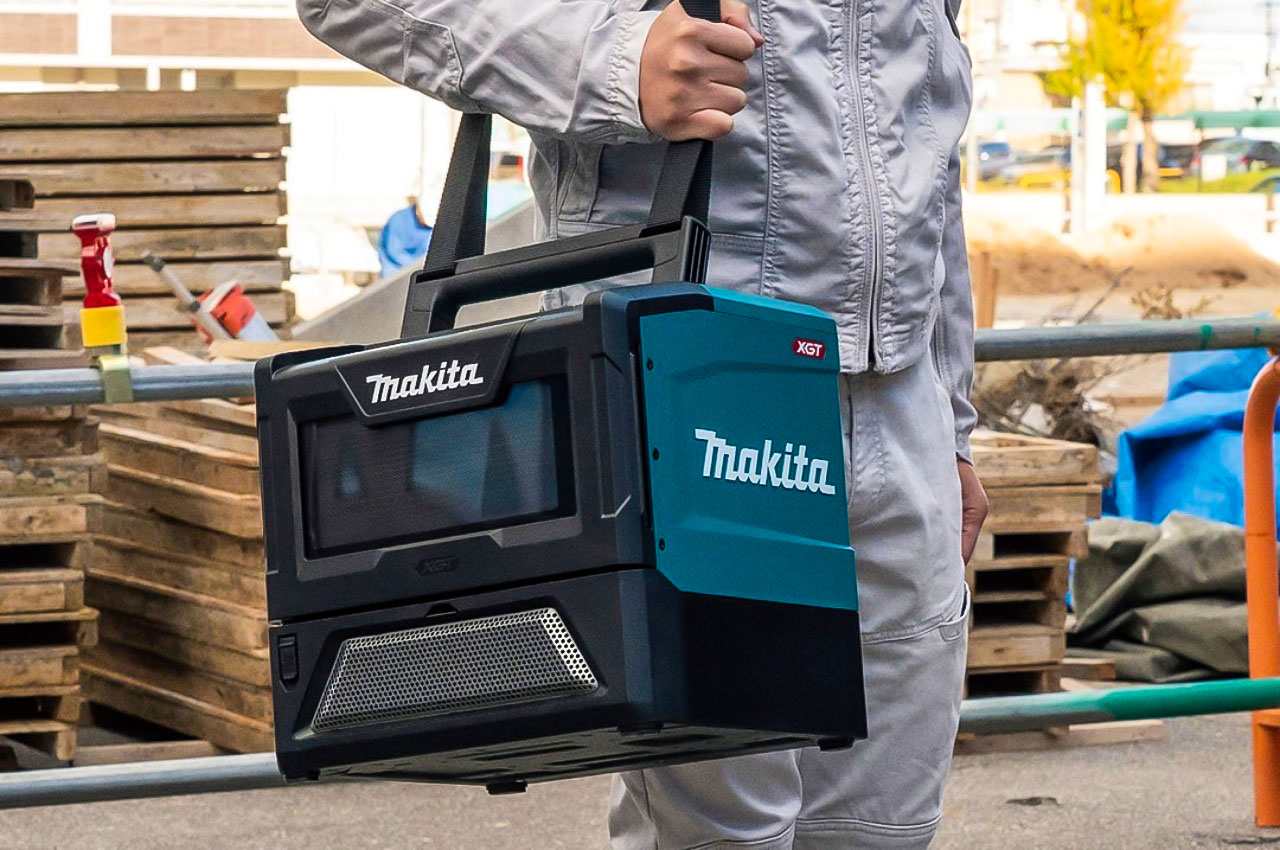
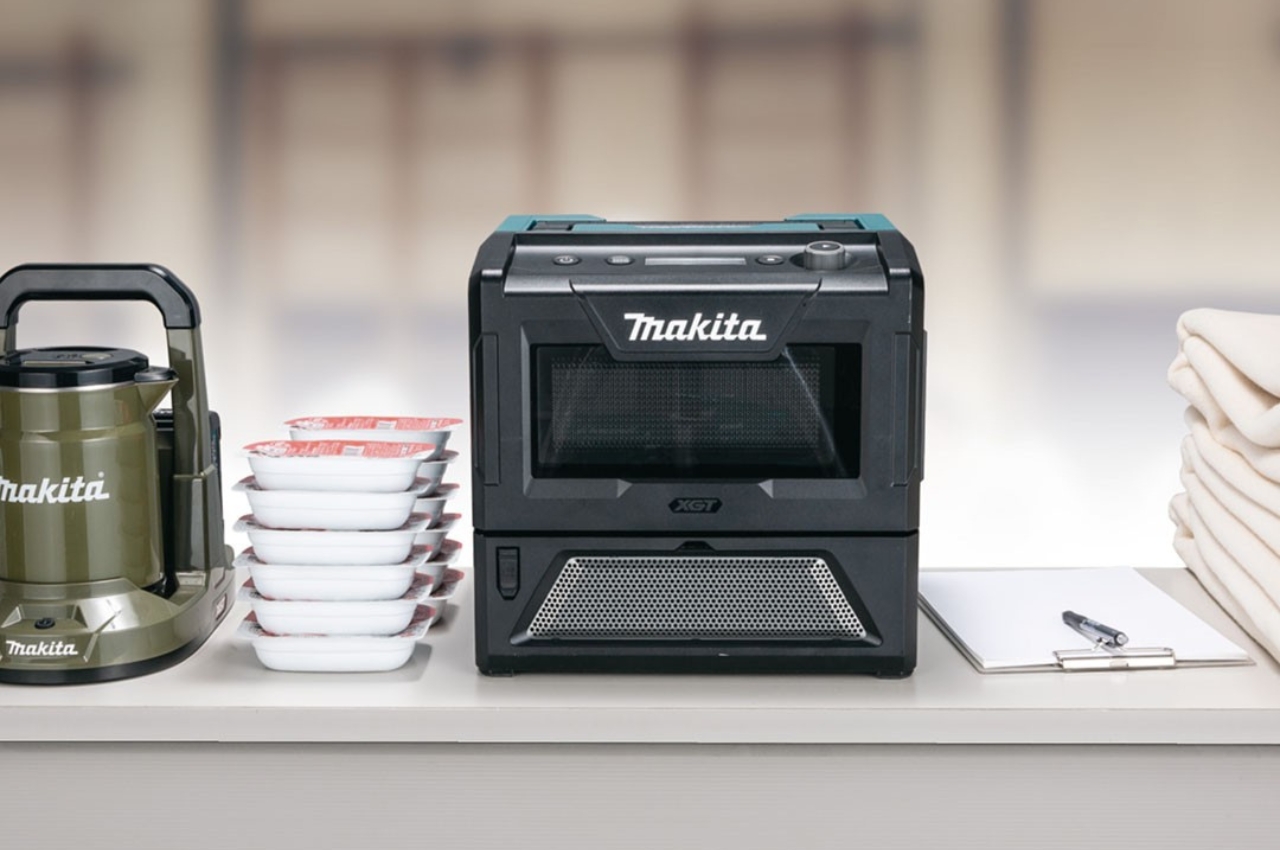
This cordless microwave uses the cordless XTGT system to help you heat your meals and snacks when you’re on the go. It has 40-volt rechargeable batteries and can use up to 500 watts for eight minutes and then 350 watts after that to save energy.
Why is it noteworthy?
When the batteries are fully charged, it will be able to warm up 11 meals or 20 drinks. It also has a USB port so you can also juice up your smartphone or a gadget, but of course, you’ll probably have to choose between your meal or your device. The microwave also comes with a handle and a strap so you can carry it around with you.
What we like
- If you’re worried about safety, the design has safety measures in place for the user’s convenience
- It also deactivates when it’s tilted or when the door is opened
What we dislike
- If you’re warming up frozen meals, it might take up more energy so you’ll be able to reheat fewer meals
4. The Microtech Exocet Dagger
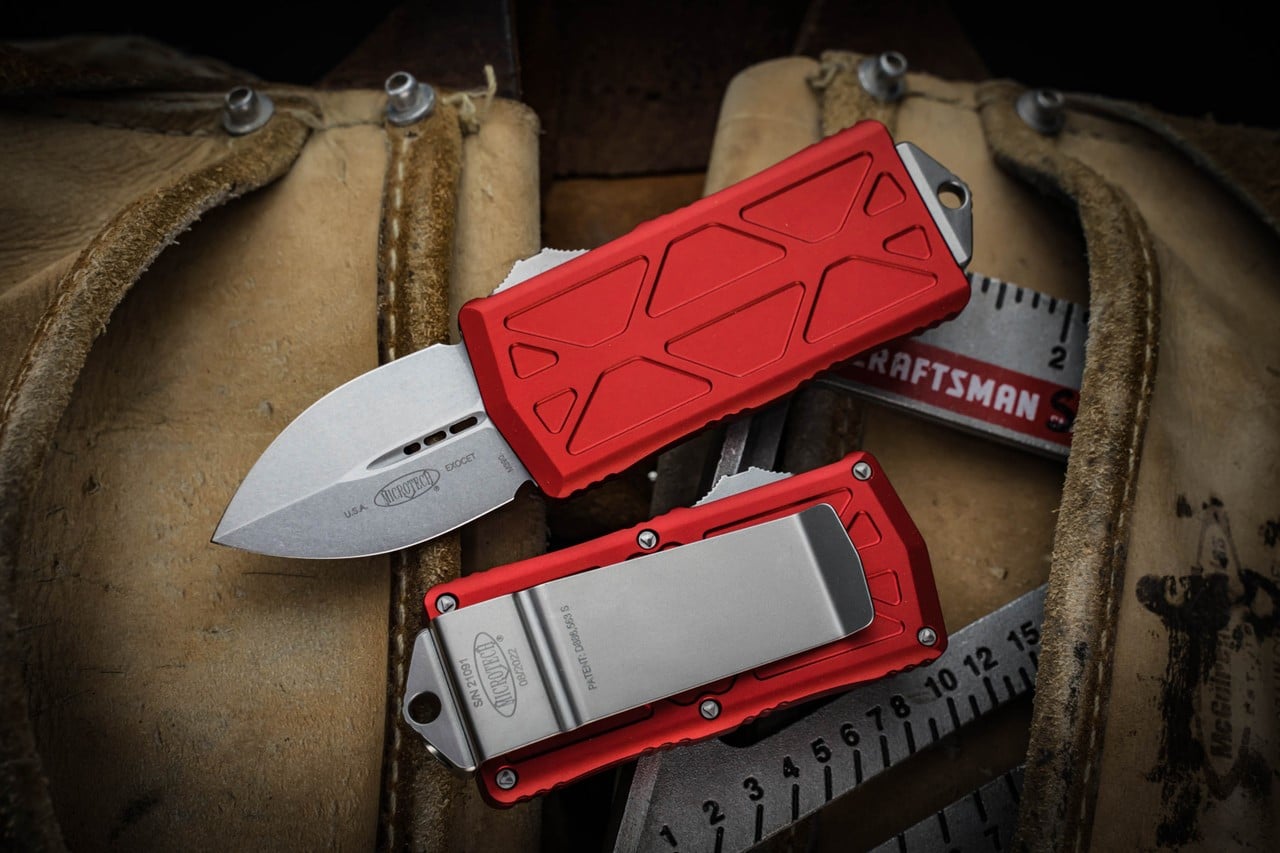
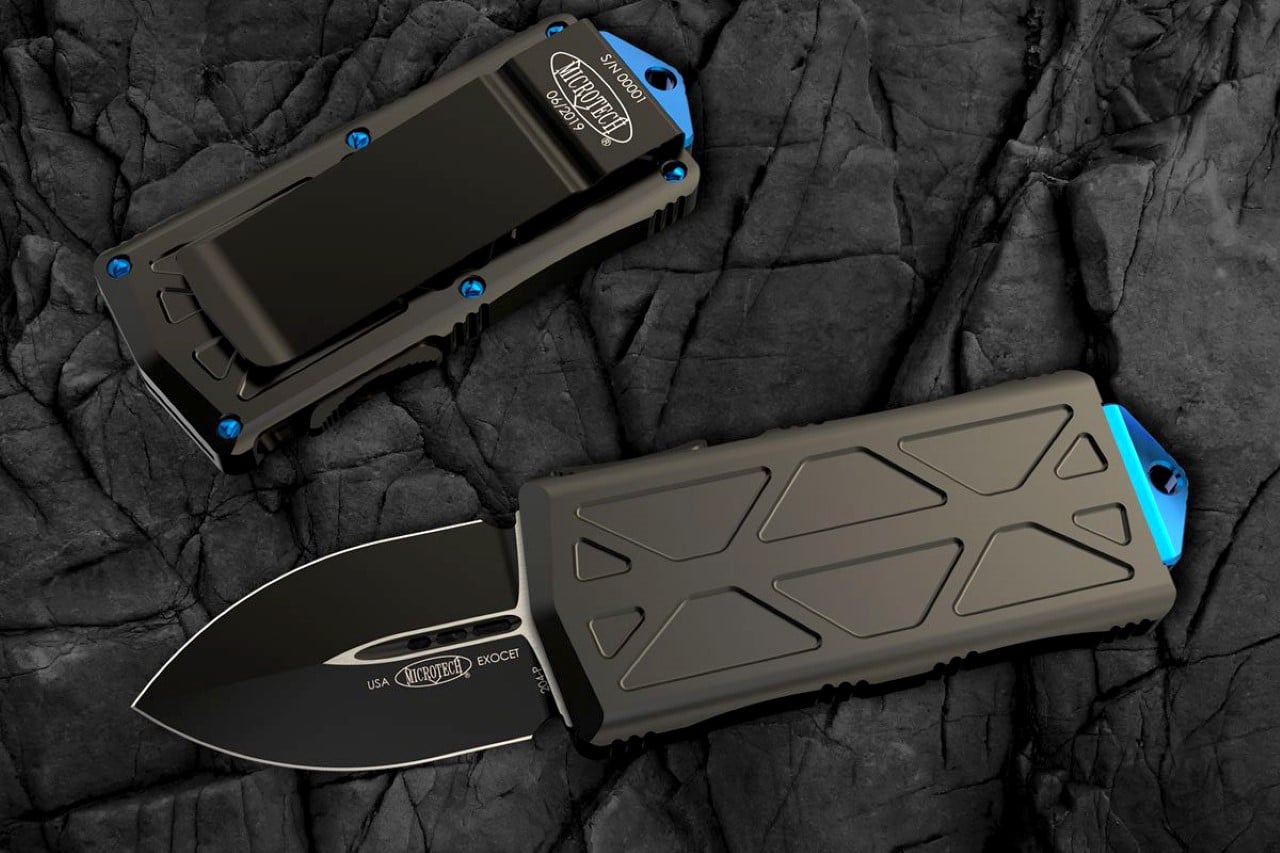
With a tiny 1.94-inch blade, the Microtech Exocet Dagger is actually legal to carry in most states, making it the perfect EDC to have on you at all times. The dagger features an OTF-style (out-the-front) drop-point blade made from CTS 204P steel that’s perfect for piercing and carving outdoors and doing things like opening boxes indoors.
Why is it noteworthy?
The blade retracts into the Exocet’s rather comfortably compact aircraft-grade aluminum handle, which also has a pocket clip on one side that doubles up as a money clip, letting you carry your cards and cash with you. I imagine taking out your money for a mugger would be a pretty interesting event, given that your de facto wallet also doubles as a blade!
What we like
- It’s also the relatively wide pocket clip on its side, which Microtech designed to also double as a money clip, giving you a safe and secure place to store your Benjamins
What we dislike
- We wish it had at least one additional function to make a multitool EDC
5. Tentsla
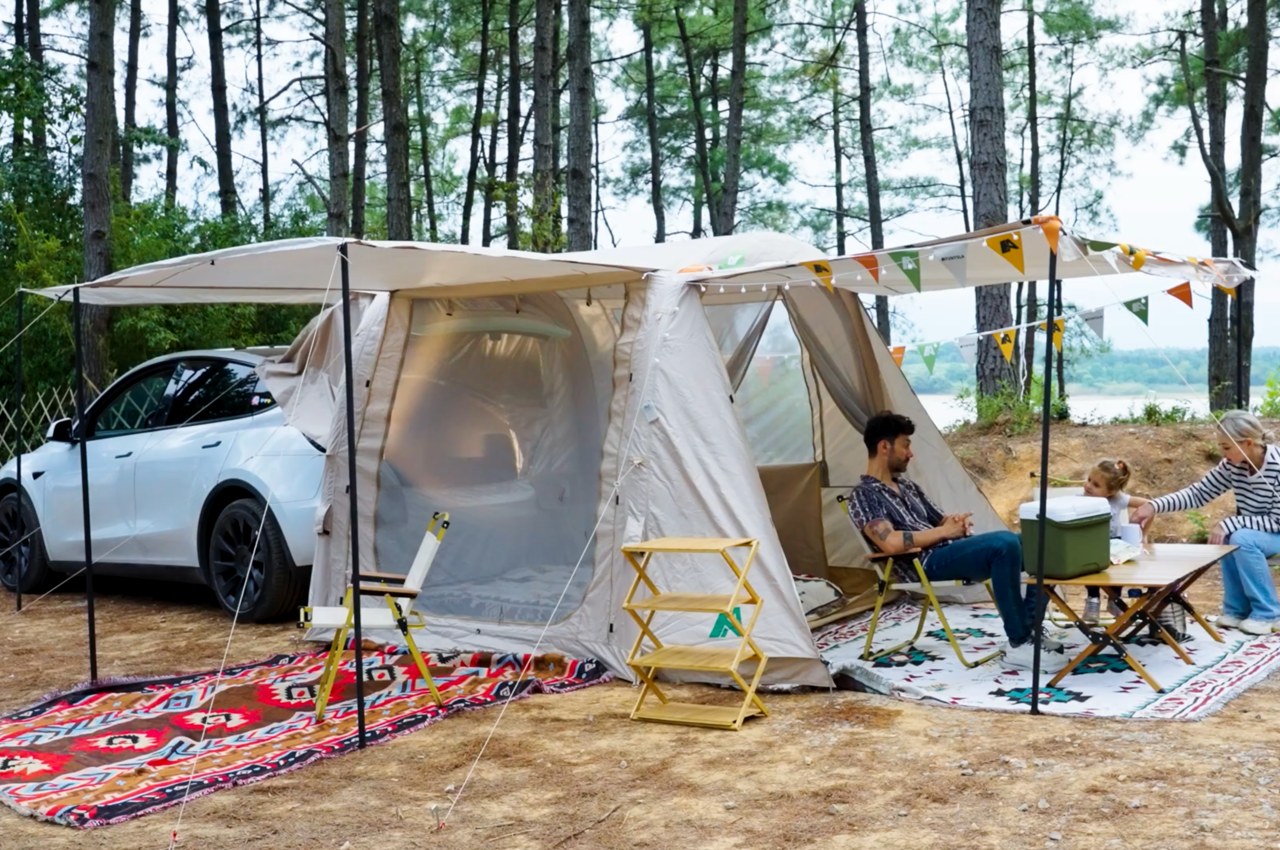
Meet Tentsla – it’s more than just a pun, it’s a tent that fits in your Tesla’s boot and opens up into a full-fledged tent that can be used alongside the Tesla’s Camp Mode.
Why is it noteworthy?
Designed to turn your EV into the ultimate camping experience, the Tentsla comes with all the bells and whistles, including a multi-use weather-resistant canopy, mosquito netting, and a pump to help you set up your Tentsla in minutes. Once you’re ready to make your way home, the Tentsla folds right up into a bundle small enough to fit in your EV’s frunk or boot, keeping you ever-ready for any impromptu tailgating session!
What we like
- Boasts a multi-canopy design that lets you block out the sun from pretty much any angle to keep your tent cool during the day
- Tentsla is designed to withstand up to 6000mm of water pressure, keeping the tent’s interiors waterproof even in inclement weather
What we dislike
- Only restricted to the Tesla Model Y
6. Supernova
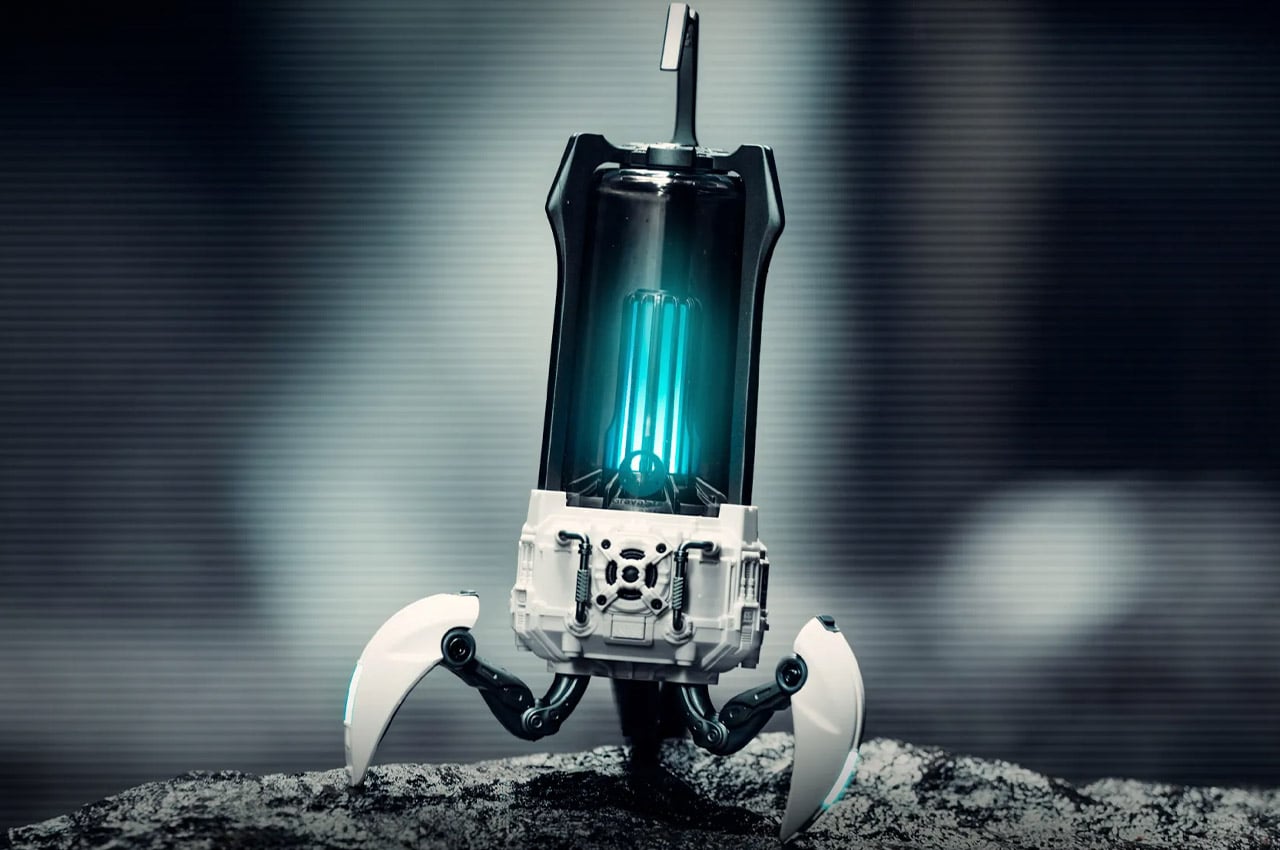
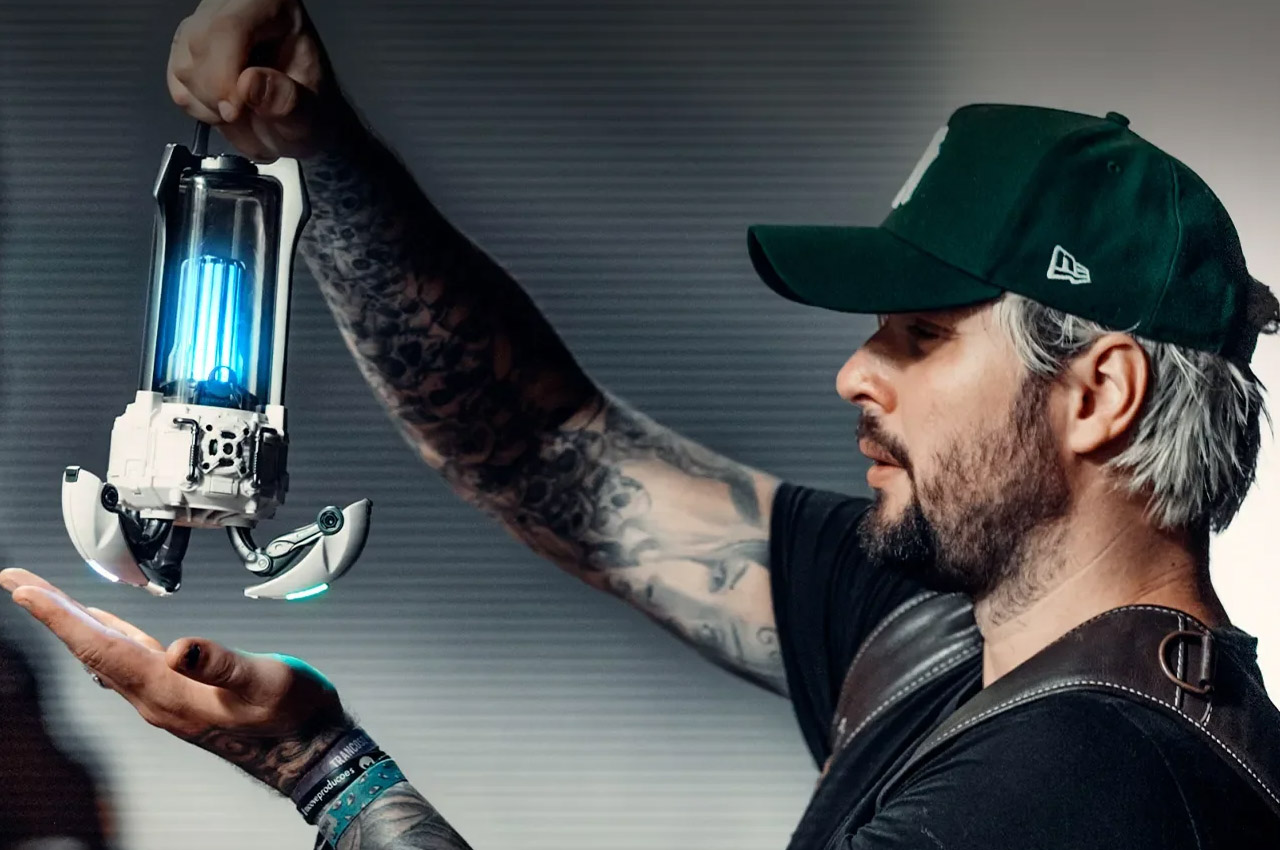
GravaStar who’ve surprised geeks with mecha-inspired Bluetooth speakers in the recent past have added another sci-fi speaker cum LED lamp to their line-up. Dubbed Supernova, the accessory looks like a three-legged robot, something anyone would want to sport in their geeky den.
Why is it noteworthy?
The Bluetooth speaker besides looking really inviting to own, fairs well when it comes to the overall build quality, functionality, and hardware specifications. It is crafted out of a solid zinc alloy metallic body standing on GravaStar’s iconic tripod legs that we saw in their previous designs. The accessory with a 3-inch full-range speaker has 25 watts of power, 90db of output, and half-inch high-frequency tweeter for rich, crisp sound delivery.
What we like
- In the music-playing mode, this light can synch to the rhythm of the audio for partygoers
What we dislike
- Could get easily damaged in the outdoors
7. The Chair-A
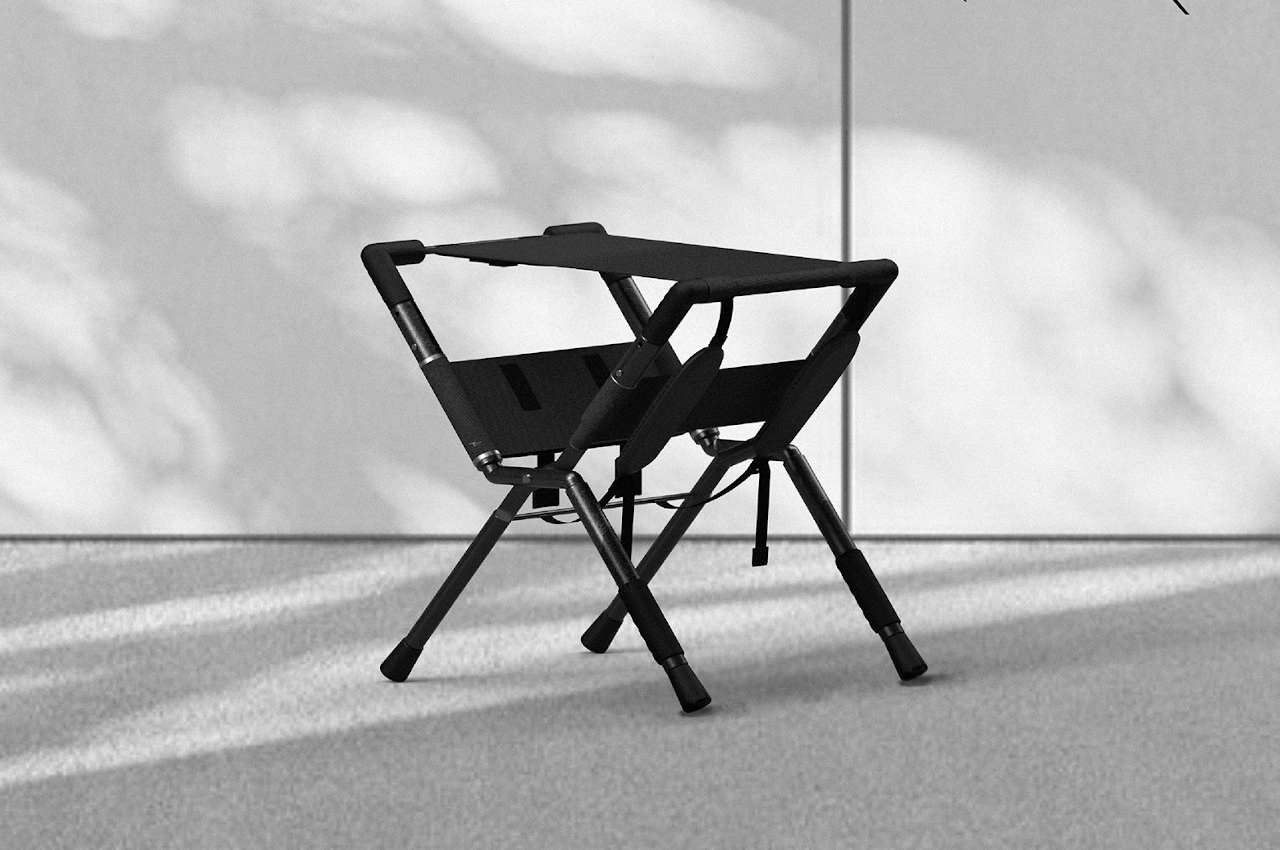
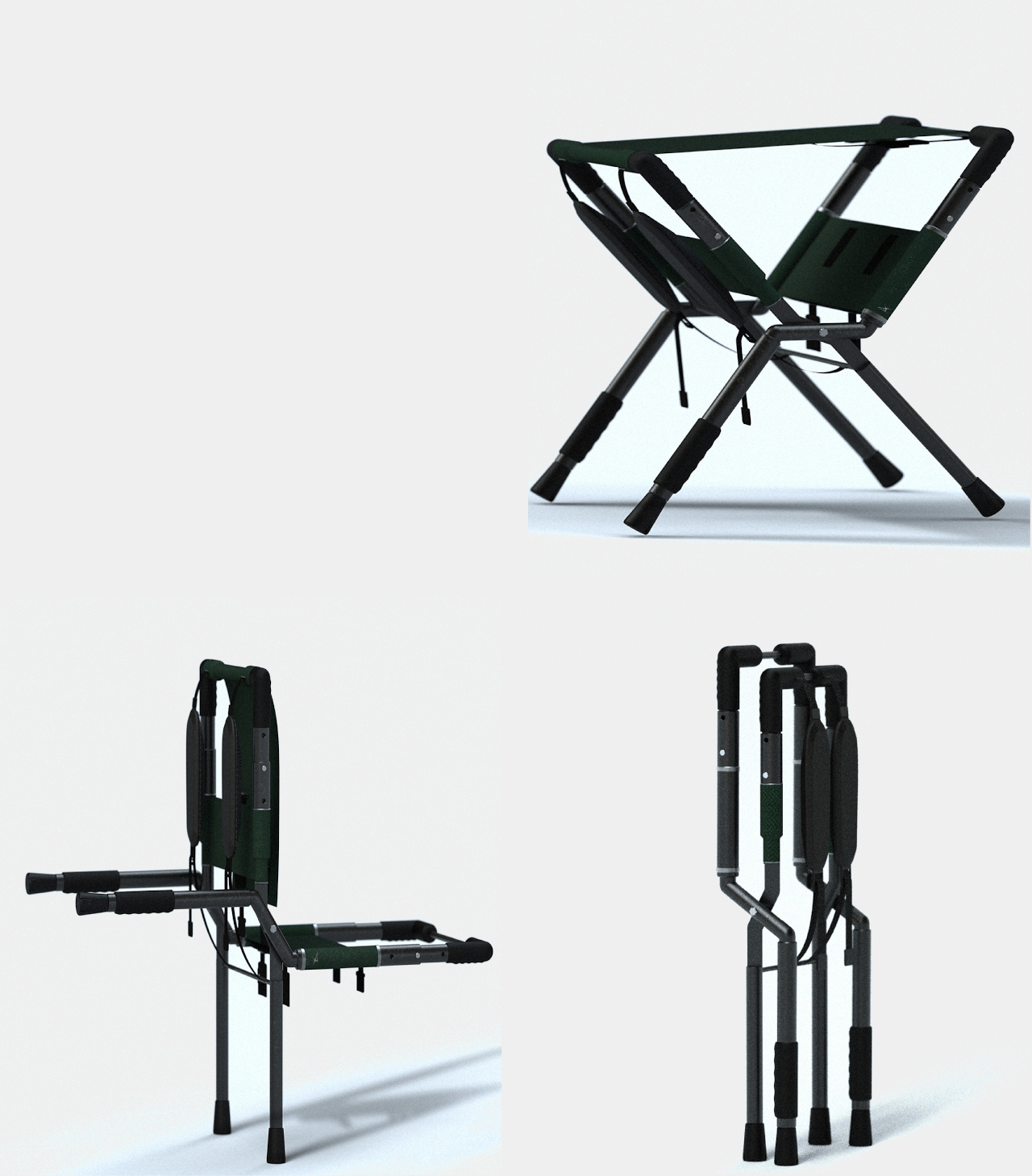
The Chair – A can be “half folded” into a form that almost resembles a “jigae” or a traditional Korean carrying tool. It is practically a frame that lets you load more things on your back without having to cram them into your backpack or have them dangling precariously from bags.
Why is it noteworthy?
This kind of tool has been used to easily transport loads of firewood, and its design hasn’t really changed at all in the past centuries. This chair, however, applies an A-frame design that makes the carrier look a bit more aesthetic while also providing more stability.
What we like
- It folds completely flat so that it can be conveniently stored in cramped spaces
- The arms do help shift the weight a bit to prevent strain and injury
What we dislike
- Not very comfortable for prolonged use because of the fabric seat
- Absence of a backrest
8. The Quasar Portable Lamp
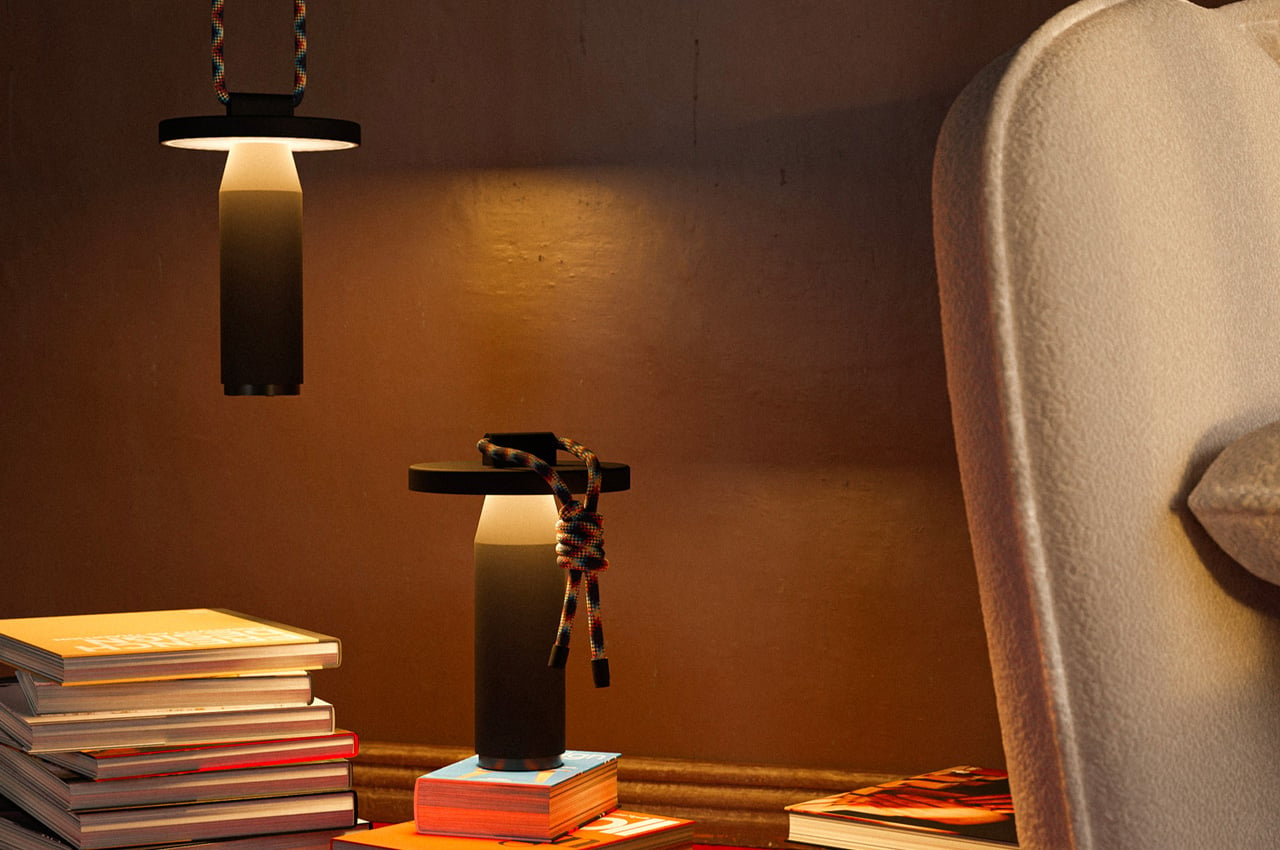
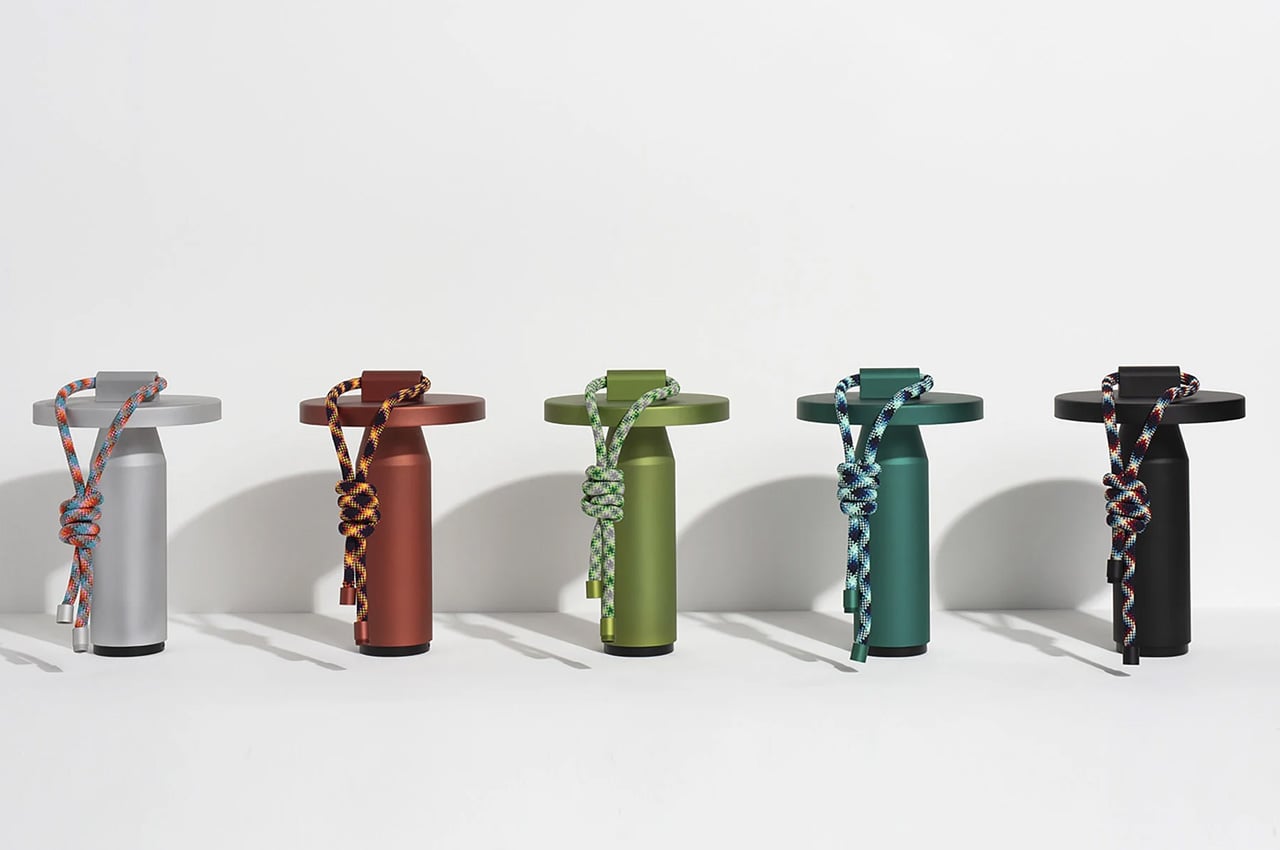
A pretty cool and unique lamp design I recently came across is the Quasar portable lamp. Designed by Samy Rhio and Petite Friture, the Quasar portable lamp, is designed to be a ‘nomadic lamp’.
Why is it noteworthy?
French designer Samy Rhio designed this nomadic lamp to enable users to carry it around, allowing it to illuminate any space they go to. They can hang the nifty lamp using a multicolored strap that will remind you of a climbing rope.
What we like
- The lamp has been equipped with a five-meter-long woven rope that is attached to the top of the lamp, making it a portable design that can be transferred from one location to another
What we dislike
- Not sure if the lamp is durable enough to withstand extreme weather conditions
9. The Edison Light Stick
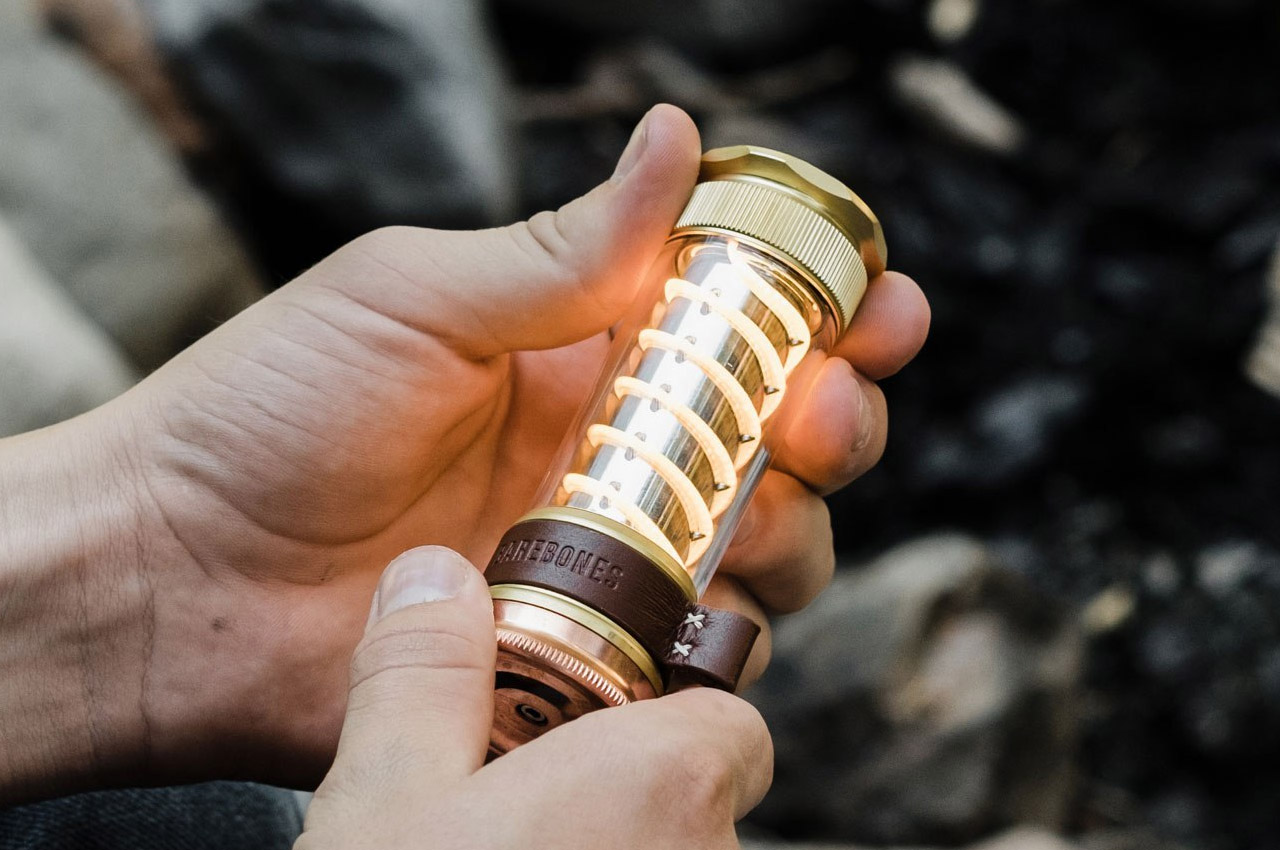
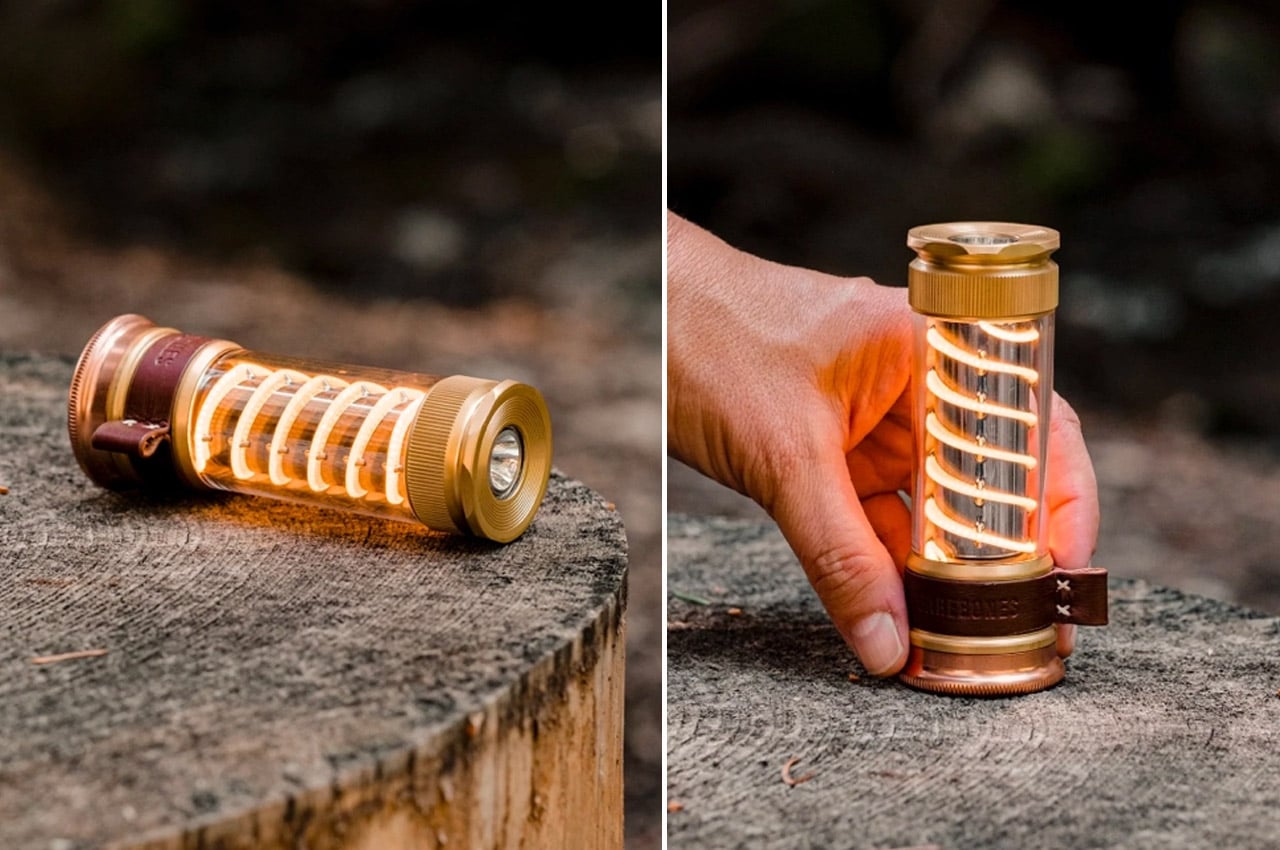
Inspired by the vintage lantern, the Edison Light Stick from Barebones is a multifunctional flashlight on Huckberry, that would be super helpful on all your outdoor adventures. It emits a warm glow that is great in emergencies and functions as a direct light for essential tasks like preparing food or fetching water.
Why is it noteworthy?
The lantern-inspired light glows warmly is multifunctional and can instantly uplift the mood in the camp or double as a reading light for those who still love catching on some good old reading during their camping trips. The glass tube body of the Edison Light Stick features brass and copper construction on top and bottom, while leather accents complete its handsome look.
What we like
- Equipped with seven different light modes so you can have your ideal ambiance anytime, anywhere!
- Exquisite brass and copper construction accentuated with leather accents
What we dislike
- The price tag is a little hefty compared to similar products on the market
10. The Mobile Universe


Called the Mobile Universe, this portable battery is super easy to carry along when you go camping. It has been amped with different inputs and outputs, allowing you to power up all the diverse devices that you require when you go camping. You have AC output, USB-A, USB-C, 12V for car sockets, and other things you may need.
Why is it noteworthy?
It can charge smartphones and even power a small coffeemaker. The device also has different wires and connectors, living up to its “universal” name. Campers and those that will be spending time in the great outdoors can definitely benefit from bringing a device like this if they don’t want to totally go off-grid and still have access to things like phones, tablets, and other electronic devices.
What we like
- Has some significant power to it, allowing it to charge all kinds of devices
What we dislike
- It’s still a concept, and we need more information on it
The post Top 10 essential camping gear for glamping enthusiasts first appeared on Yanko Design.
